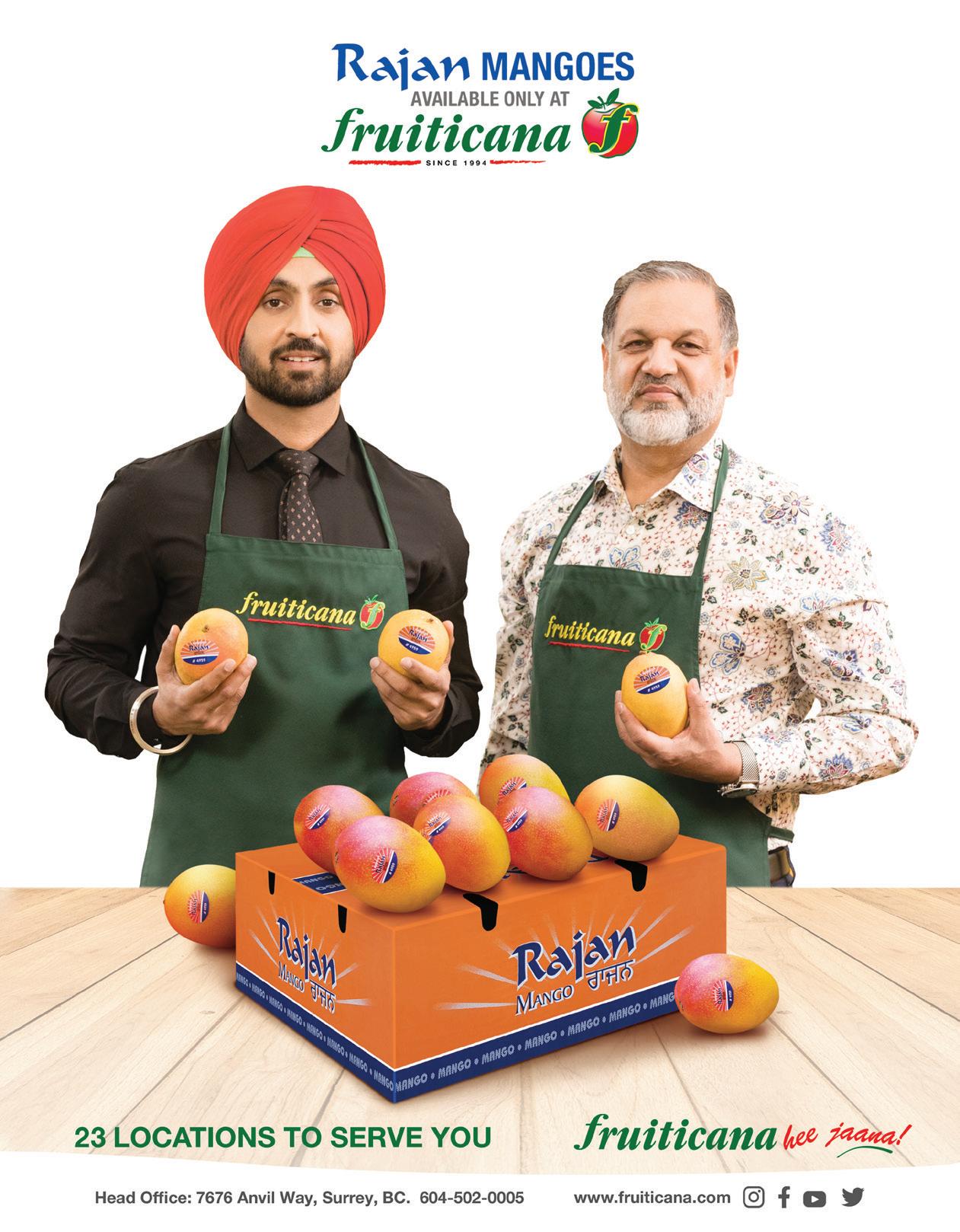






























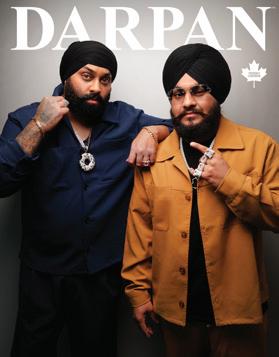

PUBLISHERS
Gurvinder S. Hundal
Ramneek S. Dhillon
EDITOR
Ancy Mendonza
GRAPHIC DESIGNER
& VIDEO EDITOR
Jaskaran Singh
ADVERTISING AND SALES
Gurvinder S. Hundal
Ramneek S. Dhillon
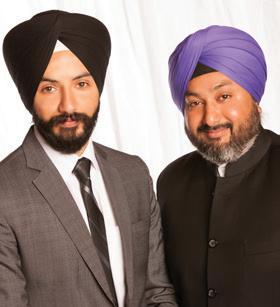
Hello DARPAN readers,
With summer just around the corner, there's an energy in the air—longer days, warmer evenings, and a sense of adventure kicking in. As we lean into the season of sunshine, this MayJune issue of DARPAN is full of stories to inform, inspire, and spark connection.
We’re still glowing from the success of our DARPAN Power Women of Influence event this past March. What a powerful evening it was— celebrating South Asian women who are breaking barriers and building legacies. That spirit of inspiration continues through every page of this edition.
On the cover, we spotlight Inderpal Moga and Chani Nattan—two talented artists from Surrey who have taken Punjabi hip-hop to the next level. Their music, message, and journey are unapologetically rooted in culture and creativity, and we’re thrilled to share their story.
May and June also bring moments of heartfelt celebration with Mother’s Day and Father’s Day, and our feature, “Our Parents, Our First Teachers,” is a tribute to the quiet strength and wisdom that shape us. You’ll also find a compelling DARPAN Exclusive with Premier David Eby, touching upon important issues that affect the province, and a timely read on the impact of social media on young children, inspired by Netflix’s Adolescence—a must-read for today’s parents navigating the digital age.
From a family-friendly travel roundup of Canada’s best national parks, to inspiring spotlights on Netflix’s Bollywed, Daisy Bains, Vancity Bhangra, and global star Saloni, this issue is a celebration of community, creativity, and summer spirit.
Thank you, as always, for inviting us into your homes and hearts.
WRITERS
Ancy Mendonza
Benjamin Yong
Mrinalini Sundar
Naina Grewal
Natasha D'souza
Shweta Kulkarni
CONTACT
Tel: 604-572-0199
Email: info@darpanmagazine.com 340-8140, 128 St. Surrey BC. V3W-1R1
JOIN US ONLINE!
Visit: www.darpanmagazine.com @darpanmagazine
DARPAN Magazine, a bi-monthly release by DARPAN Publication Ltd., is a leading South Asian lifestyle magazine. No part of this magazine, including editorial content, images, or advertisements, may be reproduced or reprinted in any form without the prior written consent of the Publishers. The views expressed by contributors are not necessarily those of the Publishers, who assume no responsibility for any errors or omissions. © 2025 DARPAN Publication Ltd. All rights reserved. Publication Sales Agreement No. 41116014







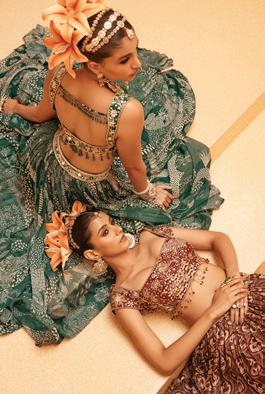




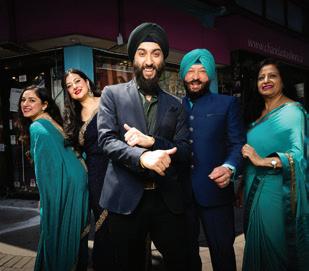

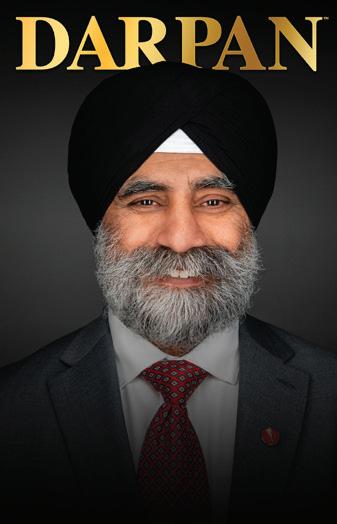
It makes me so proud when DARPAN highlights real heroes like Baltej Singh Dhillon. His journey is beyond inspiring. Thank you for bringing his story to light—this is the kind of representation we need more of.
– Prabhjot Bhatia
Re: Thank you so much for your kind words! Baltej’s story is one of strength, conviction, and breaking barriers—and we’re so glad it resonated with you. We’ll keep shining the spotlight on those who are shaping our community with pride and purpose.
– DARPAN Magazine

Tag us on social media: @DarpanMagazine & #DarpanMagazine
Absolutely loved the Women’s Edition of DARPAN, great stories throughout! The Salutes feature was incredibly powerful. Sunitha Krishnan’s story moved me to tears—such strength, such grit. So inspiring! –
Simran Gill
Re: This means the world to us! Stories like Sunitha’s remind us of the change one person can bring. We’re honored to share their journeys and grateful for readers like you who truly connect with them. More inspiring women ahead, we promise!
– DARPAN Magazine
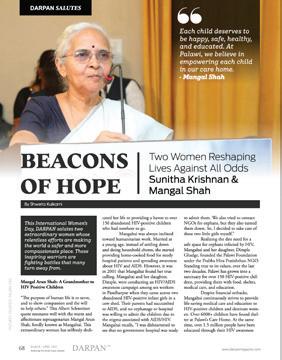
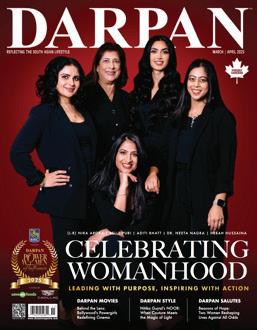
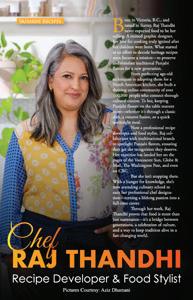

Enjoyed the Vaisakhi edition! From inspiring spotlights from within the community to Chef Raj’s fresh take on traditional recipes—it all felt like a celebration of who we are. Loved the thoughtful features. Keep them coming!
– Karanvir Khurana
Re: We’re so happy to hear that! Vaisakhi is such a special time, and it’s a joy to share stories and flavors that reflect our roots and our evolution. Thank you for reading and being part of the DARPAN family. Here’s to more storytelling that feels like home!
– DARPAN Magazine


Vancouver has been making headlines with major events like the FIFA World Cup 2026, and now the addition of a Professional Women's Hockey League (PWHL) franchise. What does this say about the city's evolution as a global sports destination?
I give credit to Expo 86 for transcending Vancouver’s identity as a global destination, which initiated critical event infrastructure, like the BC Place Stadium, Canada Place, and SkyTrain. Our tourism industry stepped up to initiate the bid for the 2010 Olympic and Paralympic Winter Games to support the visitor economy in the low season. With success in 2010, Vancouver earned a high level of confidence from the global sports community and trusted relationships that play a key role in attracting future global sports events.
Tell us about the role Sport Hosting Vancouver plays behind the scenes in attracting and delivering these major sporting events.
Sport Hosting Vancouver is a community-industry partnership between the City of Vancouver, Destination Vancouver, and the Vancouver Hotel Destination Association. Together, we work to identify, attract, and grow major sports events that support the local economy and leave tangible and intangible benefits within the local community. It is unique, in the sense of a ‘one-stop’ shop, that acts as a concierge to assist international event right holders on how to successfully do business in our city, both on and off the field of play.
What are the key ingredients that make Vancouver such an appealing city for international sporting events?
The key to our success is much more than having a venue or stadium to host the event properly. We consider our ‘X’ factors to be the accessibility of direct international flights to our world class airport, the walkability of our downtown core, the amazing landscape that surrounds us, and experiences you have outside the stadium—from Michelin-starred restaurants to unique cultural experiences with our local First Nations, there is something for everyone.
In light of PWHL’s expansion into Vancouver and you being a golfer yourself, what does the future look like for women in sports in Vancouver?
I’m so incredibly excited for the future of women’s professional sport in Vancouver. Vancouver hosted the FIFA Women’s World Cup in 2015 and had a record of selling out BC Place Stadium, not once but 4 times. We kicked off 2025 with a sell-out crowd of 19,000+ fans at Rogers Arena, hosting the first-ever PWHL in British Columbia. In March, we hosted the first-ever U Sports Basketball Championships, where the top 8 Canadian university teams, both men and women, were hosted in the same city at the same time at the same venue. In April, we made history hosting the inaugural match of the Northern Super League at BC Place Stadium, where the Vancouver Rise FC scored the first win of a women’s professional soccer game in Canada. I know that the momentum will only continue when the puck hits the ice out west, with a

I
hope to diversify our portfolio with events that are reflective of our community and demographics. I would LOVE to see an international cricket tournament. I also think that Vancouver would be an ideal host of the World Gay Games, and I’d love to plan a Stanley Cup parade!"
soon-to-be-named PWHL Vancouver expansion team that will start their season at the Pacific Coliseum.
Events like the HSBC Vancouver Sevens and the 2024 Grey Cup have brought international attention. How do these events impact local businesses and communities? With all the events we attract to Vancouver, we are very intentional and strategic to ensure that we keep the best interests of our community at the forefront. Our core objective is to complement the tourism calendar and attract events during the off-peak periods between October and April that will benefit the community the most. The Vancouver Sevens is our core annual event that is intentionally hosted in late February to support our low tourism season. That event alone annually draws over 8,000 room nights and has an estimated economic impact of $18.6 M. 2025 marked its tenth year, and since then, we have seen youth rugby grow by 30% in our local community programs.
6 How important is intergovernmental collaboration when it comes to hosting largescale events in Vancouver?
To be successful in our major event bids, it is essential that municipal, provincial, and federal priorities are aligned and that we collaborate in the early stages of the bid to build the event proposal. With collaboration between all three orders of government, you can leverage the event beyond the scope of sport, maximizing the benefits for trade and investment, talent attraction, reconciliation, infrastructure, and tourism, to name a few.
Can you share how Sport Hosting Vancouver ensures events are inclusive, accessible, and beneficial for all Vancouverites, especially underrepresented communities?
With each bid proposal we produce, we do it keeping the community front of mind. Our priority is to work with our local Nations and engage them in the process to welcome the event to the unceded territory of the Coast Salish Peoples. For our spectator events, we distribute complimentary community tickets through Kids Up Front, a local charity. We have distributed over 25,000 community tickets in the past 10 years.
How does hosting major sports events contribute to the city’s long-term economic and social development?
Hosting the Invictus Games was an incredible platform and opportunity for the city to generate a legacy of gratitude for the men and women who have served our country. I’ve come to realize there is no optimal ROI number for the event; the only ROI is the ‘return on inspiration.’ We can point and say that this event generated over 25,000 room nights in the city, and welcomed over 19,000 visitors in February, but really, the heartfelt impact of volunteers and the courageous service of men and women who represented their countries will leave a lasting social legacy.
What opportunities do these events create for youth and grassroots sports development in the region?
We recognize that hosting major sports events does boost short-term economic benefits, however, it’s the impact of long-term youth and grassroots sports development that excites me the most. I look back at the 2015 FIFA Women’s World Cup and hear the stories of a young Julia Grosso who was just 14, watching her idol, Christine Sinclair, play for Team Canada from the stands at BC Place. Fast forward to the Tokyo Olympics in 2021, and there she was on the pitch beside her idol, scoring the gold medal-winning penalty kick, and I can’t wait to hear more stories from 2026 and beyond!
Looking ahead, what is your vision for the future?
The key challenge for us will be to continue this momentum and reach new limits. I hope to diversify our portfolio with events that are reflective of our community and demographics. I would LOVE to see an international cricket tournament. I also think that Vancouver would be an ideal host of the World Gay Games, and I’d love to plan a Stanley Cup parade!



By Natasha D'souza
In the heart of Toronto’s Little India, Chandan Fashion—the iconic family-run bridal shop shines in Netflix’s hit docuseries ‘Bollywed’. The show offers an intimate look into the Singh family’s world, featuring Kuki, the protective patriarch; Sarab, the visionary matriarch; son Chandan, the strategic mind and muscle behind the series’ success; Roop, the daughter-in-law and troubleshooter keeping everything in line; and sister Chandni, the peacekeeper and mediator balancing it all. DARPAN had the opportunity to catch up with Chandni herself, who shared her journey and what it’s really like to navigate the chaos of family, business, and the excitement surrounding South Asian weddings.
Q: Your family business is now the focus of a Netflix series. How does it feel to see your story and heritage celebrated on such a global platform? Did you ever imagine that the Singh family would someday emerge as one of the most loved immigrant stories on OTT?
Our TV show, Bollywed, was actually seven years in the making before it was picked up by CBC, and I think it’s the perfect network for us. CBC celebrates diversity and inclusion, showing South

Asian culture without a filter. Our parents speak Punjabi on screen, celebrate Diwali, and do their prayers without any translation. It’s just organic!
The journey wasn’t easy, with all the rejections over the years. But when the show was finally picked up, it was the perfect time. I believe the show was ahead of its time, as the love for Bollywood and Indian culture is so much greater now than it was a decade ago. My brother always said it wasn’t a matter of ‘if’ the show would get picked up, but ‘when’. And when it did, the response was amazing.
With Netflix being a global platform, the second wave of attention has been overwhelming. We now have


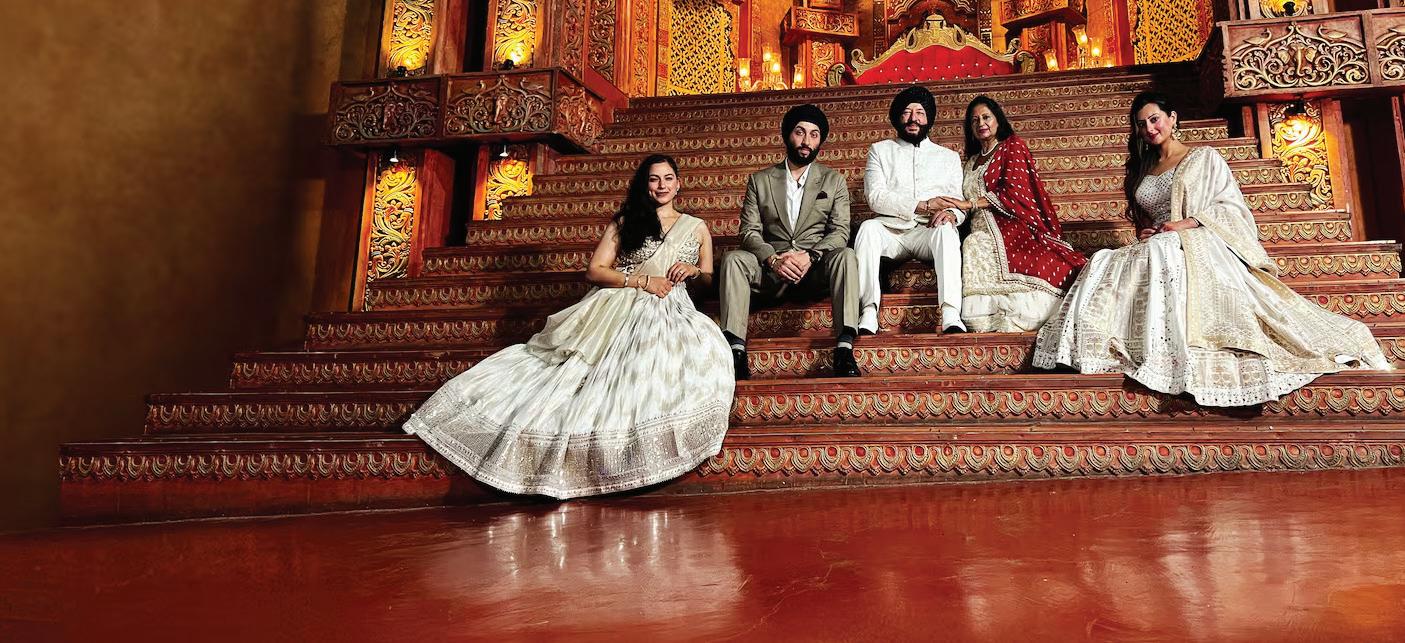

customers coming in on weekends, excited to meet the family and see the store in person. It’s been an amazing privilege and blessing to represent a South Asian family, especially a Punjabi Sikh family, on such a large scale. My parents were pioneers of the Girard India Bazaar 40 years ago, and we’ve always been part of the community. The show just expanded that family even more.
Q: Bollywed captures both the glamor of Indian bridal fashion and the realities of running a family business. What have been some of the
most rewarding and most challenging moments so far?
With any family business, there are always ups and downs. Chandan and I grew up in the business, and it’s been a privilege to take it to the next level. But with growth comes challenges. The show captures the generational differences in ideas, and while we may disagree, it’s always with laughter. Our parents taught us that there’s a solution to every problem. One major challenge was expanding our business. We’ve always wanted to open a second location, but there was hesitation about how it would impact both the business and our family dynam-

ics. In season one, you’ll see us grappling with that decision. On the rewarding side, creating our couture line and hosting our fashion show have been dream moments for us. It’s been exciting to see everything come to life. And I love that the show captures all this so organically — it’s a true reflection of our journey.
Q: Your journey to get Bollywed made was not easy, with several rejections before CBC picked it up. What kept you motivated to tell your story despite the setbacks?
We had several rejections, but each one pushed us to work harder because we were confident in what we had to offer. Our story is relatable; the classic immigrant ex-
perience, the second generation growing the business, and the challenges we face. People, not just from the Indian culture but also from Asian, Portuguese, Italian, and Greek backgrounds, resonated with it. Our story is about representing a South Asian family, and even more so, a Punjabi Sikh family proudly wearing turbans. It’s about normalizing our presence, celebrating who we are, and showing that Punjabis can achieve great things in a positive light, especially for future generations.
Q: What are the little things you do at home or at work to keep your cultural identity alive in everyday life?
We are a proud Desi family, deeply connected to our roots. Whether it's at home or at the store, we're always engaging with our South Asian and Punjabi culture. We go to the Gurdwara, give back, and make sure we're educating our children about Indian and Sikh history. Mom and Dad started the tradition of morning prayers, and Chandan and I continue this at both our store and at home.
Q: With so many strong personalities under one roof, what’s your secret to resolving disagreements? Is there a family rule, ritual, or running joke that always helps?
I love that you've said so many strong personalities under one roof, because that's exactly what we are. We're such strong, confident individuals, and we all hold our opinions. So, we definitely have differences of opinion or moments, but I think the credit goes to my mom and dad, who have always been leading by example and making sure that there's always unity and harmony within our family.
Bollywed gives us an authentic glimpse into the Singh family’s hustle, passion, and heritage. With a perfect blend of tradition and modern-day business, they prove that the most beautiful things are built with love, laughter, and a lot of family spirit.



















Becoming a Loran scholar feels like I’ve opened a door to personal growth and self-reflection. "

n a pool of over 6,000 applicants across Canada, Surrey’s Daisy Bains has emerged as one of just 36 recipients of the coveted Loran Scholarship, a $100,000 award that recognizes outstanding leadership, character, and service. A student of École Kwantlen Park Secondary, Daisy’s achievement is evidence of her sincerity, self-belief, and the power of staying rooted in values.
“Becoming a Loran scholar feels like I’ve opened a door to personal growth and self-reflection,” she says. “The scholarship is not just about recognizing my actions, it’s a promise to myself and my community to keep working towards positive change.”
Selections for the Loran Scholarship are a rigorous national process, which included her flying to Toronto for the final interviews. Daisy still remembers the life-changing moment when she was told she was chosen, “All 90 finalists were waiting for a call, and when Meghan told me that the next 4 years of my life would be transformed, I was completely speechless. My mother and I couldn’t hold in our excitement, shedding tears of joy!”
The award is more than just a financial scholarship—a Loran scholar has access to mentorship, incredible summer experiences, and a supportive community of global changemakers. Daisy’s career development facilitator at school, Ms. Duffield, introduced her to the programme. “When I first saw the posters, I thought it couldn’t hurt to apply. Little did I know that six months later, I would be part of the cohort of Loran scholars of 2025.”
What set her apart? “I have always tried to participate in and create programs with sincerity,” Daisy explains. “What we accomplished promoting racial equity within the Surrey School District wasn’t about collecting hours—it was a clear vision pieced together through hard work.”
By Ancy Mendonza
This vision led her to take action. Daisy proudly brought her vibrant culture to campus by bringing together a Giddha dance team, drawing from her long-time love for the dance form and Punjabi traditions. “Giddha has been an important part of my life since I can remember. And my peers shared the same love for the art, so it was only natural to bring it to school.” She also co-founded the BIPOC Racial Equity Program at her school to address gaps in education around cultural awareness and equity.
Outside of her academic and extracurricular achievements, Daisy is a complete homebody and a grounded teenager deeply influenced by her Sikh faith. “My faith isn’t something I leave at home—it’s in my very existence, it guides my decisions every day,” she shares. She cherishes her time with family and loves fashion; “I love hanging out with my two sisters and parents… and I admit, I’m a huge shopaholic!”
Looking ahead, Daisy envisions a future where she continues giving back. “In 10 years, I see myself right back in Surrey, hopefully as a general practitioner, serving the community that raised me.”
With heart, humility, and a fierce drive to uplift others, Daisy Bains is a name to remember—not just for Surrey, but for all of Canada.













By Ancy Mendonza

The group that performed alongside Diljit Dosanjh at his Dil-Luminati Tour—VanCity Dance—is turning up the volume on tradition with high-energy Bhangra and Dhol classes across the Lower Mainland. DARPAN had a chance to talk to the team and learn more about their club, community, and future plans.
Tell us about the beginnings of VanCity Dance. What inspired you to start offering Bhangra and Dhol classes in the Lower Mainland?
VanCity Bhangra started in 2012 as a competitive Bhangra team. It began with a group of friends who shared a passion for Bhangra and competed around the world, winning numerous awards. What inspired us to start a dance school was our desire to continue our legacy. We wanted to give back to our community, share our culture, and continue competing at the highest level.
What sets VanCity Dance apart from other dance schools when it comes to teaching Bhangra and Dhol?
We take pride in being a youth-led organization that brings a unique blend of educational expertise, cultural authenticity, and innovation to our instruction. Many of our instructors are not only passionate performers but also trained high school and elementary school teachers who understand how to work with learners of all ages and developmental stages. With professional backgrounds in education, our team excels at differentiating lessons to meet the needs of diverse learners, ensuring every student feels supported and challenged. What truly sets us apart is our commitment to both traditional and modern approaches to Bhangra. We nurture growth, connection, and cultural pride through an inclusive and forward-thinking approach to Punjabi folk arts.
You offer Kids Bhangra, Adult Bhangra, Giddha, and Dhol classes. How do you tailor your teaching approach for different age groups and skill levels?
We recognize that every dancer learns differently, especially across age groups and skill levels. Some strategies we bring to our dance instruction include differentiated learning, positive behavior support, and age-appropriate lesson planning. For
younger dancers, we focus on building foundational skills through fun, movement-based learning that encourages confidence and coordination. For teens and adults, we increase complexity, technique, and cultural context to match their developmental readiness and goals.
Share a bit about the team behind VanCity Dance.
VanCity Dance has over 20 instructors and coaches. The founders—Kabeer Panesar, Karan Virdi, Jaskamal Grewal, and Rajan Nijjar—have built an academy that now includes over 200 members, with more than 50 competitive dancers who actively participate in competitions. Each team member contributes unique strengths to the academy. Their diverse perspectives help us create a vibrant and inclusive environment where everyone can grow through dance.
What has been one of the most memorable moments for VanCity Dance so far?
We’ve had countless memorable moments over the years, making it difficult to choose just a few. Performing alongside Diljit Dosanjh during his Dil-Luminati Tour, with 60 of our competitive dancers sharing the stage with him, was a performance we will never forget. Moving into our new, spacious studio in September of 2023 and sharing the stage with Jazzy B, Chani Nattan, and Inderpal Moga at the JUNO Awards was another highlight that is close to our hearts.
If someone wants to join VanCity Dance, what’s the best way to get started?
There are several ways to get started with VanCity Dance. You can reach out to us on social media via Instagram @vancitybhangra, call or text us directly at 778-565-8020, or send an email to info@vancitydance.com. To get started, simply contact us and speak with one of our instructors to find out which class would be the best fit for you. We’ll then schedule you for a free trial lesson so you can experience the class and decide if it’s the right fit or if you’d like to try another option.











“I want to perform in arenas and stadiums worldwide, especially hoping to relive that Wembley feeling."

By Natasha D'souza
Rising Milton Keynes-based singer-songwriter Saloni has made a powerful mark with her debut EP Rani, seamlessly blending pop, R&B, and Bollywood influences to reflect her British Asian identity. The upcoming star is known for her eclectic mix of musical styles. Lauded for her versatile voice and ability to sing in over 10 languages, Saloni's track ‘Nee Gundellounna’ went viral, racking up over 5 million views. With Rani, she celebrates themes of empowerment and self-confidence, carving a unique space for herself in the global music scene while resonating deeply with South Asians worldwide.
From School Assemblies to Wembley Arena: A Dream
Having recently opened for Telugu sensation Devi Sri Prasad during his London concert, Saloni’s most surreal moment was performing at Wembley Arena. “Performing to such a huge crowd with everyone singing really was a dream come true,” she says. The performance was a powerful affirmation of her hard work, a proud moment for her younger self, who had doubts about her music career.
Growing up, Saloni struggled with a sense of cultural duality. “I felt like my identities were split into ‘Desi Saloni at home’ and ‘British Saloni at school,’” she reflects. Initially, she kept her music accounts separate—one showcasing her Desi side with Carnatic music and Bollywood covers, and the other featuring her British side with English songs. Over time, she embraced both cultures, blending them seamlessly in her music. “I’m so glad I’ve dealt with this identity crisis,” she says, now creating music that truly represents who she is, becoming an inspiration for others with similar experiences.
Rani: A Celebration of Empowerment and Identity
Rani, her debut EP, is all about empowerment. “I wanted it to be an empowering one,” Saloni explains. She ensured that the EP reflected her diverse South Asian roots, incorporating languages







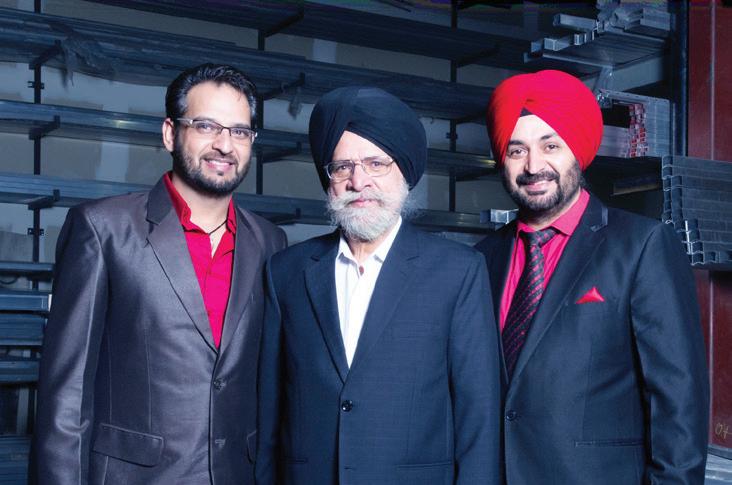
and influences from various cultures. The creative process is a reflection of what “clicks in the moment,” ensuring that each track aligns with her vision and identity. Her musical influences include legends like Shreya Ghoshal and Arijit Singh. “I’ve always loved soothing melodies and Bollywood songs,” she shares. Her track Without You is particularly inspired by these icons, with Saloni calling it her most "Bollywood Shreya and Arijit sounding song." A collaboration with Shreya Ghoshal remains Saloni’s dream. “It would be a dream come true to perform with my idol,” she says with heartfelt admiration.
Her track Chali Mein is a celebration of female solidarity. “It’s about collaboration over competition,” Saloni says. The song challenges the notion that South Asian women are discouraged from pursuing big dreams, empowering them to chase their aspirations. “We DO dream big, we DO go for what we want,” she emphasizes.




Despite years of performing, Saloni still experiences pre-stage nerves. “I get a little nervous,” she admits, but once on stage, “all those nerves are gone! It’s just a high I can’t explain.” Performing live is the heart of her music journey, and for Saloni, it’s
Saloni’s sights are set on larger stages. “I want to perform in arenas and stadiums
that Wembley feeling,” she says. She also -

Saloni’s journey represents the powerful intersection of cultural identity and musical innovation. As she continues to grow, her music will remain a beacon for those seeking to bridge the gap between Eastern


By Ancy Mendonza

On Saturday, March 22, 2025, DARPAN Magazine proudly hosted the third edition of the DARPAN Power Women of Influence at the iconic Vancouver Convention Centre, a venue as breathtaking as the evening itself. Presented by RBC and powered by Save-On-Foods and Cadillac, the event was a resounding celebration of women’s empowerment, leadership, and the tireless pursuit of equity in today’s world. With the stunning backdrop of the North Shore mountains and Vancouver’s glittering skyline, the evening brought together changemakers, leaders, and visionaries to honor the dynamic spirit of women across industries.
The excitement was palpable as over 550 guests arrived at the red-carpet reception. The media station buzzed with energy as attendees shared their anticipation for the night ahead, cameras clicked to capture dazzling fashion moments, and the sounds of live music filled the air. This year’s red-carpet reception, made possible by BM Group of Companies, was elevated by the presence of the South Asian community’s most prominent voices,




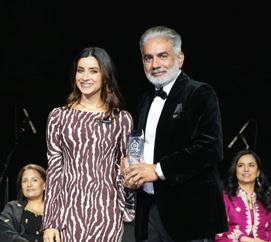

political dignitaries, and influencers from across the Lower Mainland.
The evening officially began with a captivating performance by the talented Sunehri Dance Club on the soulful anthem Tu Jhoom, setting a tone of unity and reflection. Following this was an emotionally stirring spoken word recital by award-winning poet Shane Koyczan, who masterfully reminded the audience of the strength and compassion that define Canada, grounding the night in a spirit of belonging and shared purpose.
After such powerful performances, Katie Yu, Regional Vice President, Business Financial Services, BC, at RBC, delivered an inspiring address about RBC’s ongoing commitment to diversity and leadership. With a legacy of supporting women in business and beyond, RBC’s partnership set the perfect foundation for what was to come—a night of meaningful dialogue and unforgettable celebration. The centerpiece of the evening was the DARPAN PowerTalk, a signature segment designed to inspire and empower, supported by the Tien Sher Group of Companies as our Audio-Visual


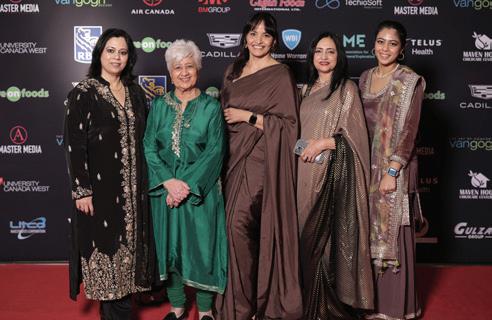
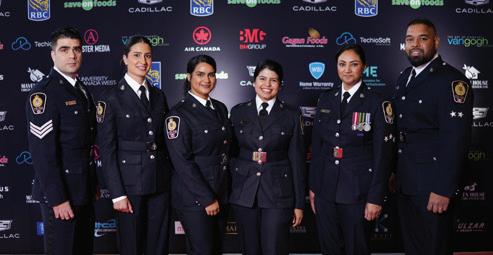
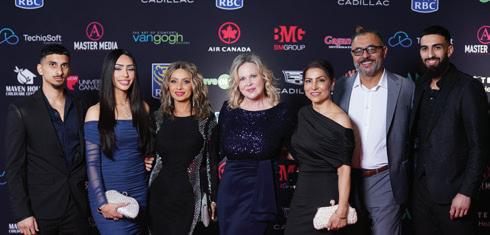



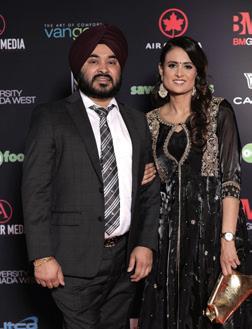



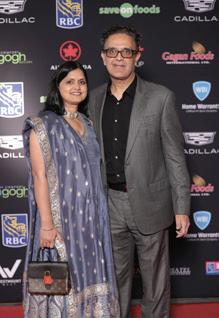
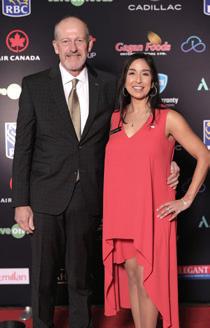

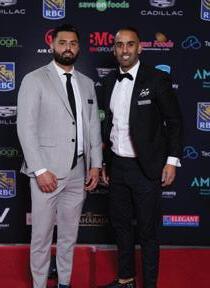
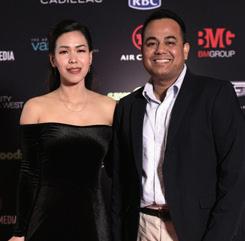



sponsor. This year’s panel, moderated by veteran broadcast journalist Robin Gill, featured an exceptional group of women leaders:
• The Honorable Farah Mohamed, senator and social entrepreneur, addressed the audience with her empowering message, “Building Bridges, Not Walls”, advocating for inclusivity and connection in both policy and community work.
• Belle Puri, the first broadcast journalist of South Asian descent in Canada, tackled the timely issue of tokenism with her talk “Owning Your Worth”, calling for real inclusion beyond quotas.
• Roshaneh Zafar, founder of Pakistan’s first microfinance institution, the Kashf Foundation, followed with her compelling talk “Be the First, Not the Last”, urging women to break barriers and build bridges for the next generation of leaders.
• Supinder Wraich, acclaimed actress and storyteller, inspired attendees with “Turning Doubt into Power”, emphasizing the importance of inner strength and self-belief in overcoming public scrutiny.
• Anoop Virk, a philanthropist and TEDx Producer, delivered her talk “Redefining Women’s Empowerment for a New Generation”, highlighting the importance of intersectionality and innovation in today’s feminist movement.
Each PowerTalk speaker left the audience deeply moved and energized, sharing personal journeys that touched on breaking stereotypes, creating inclusive spaces, and uplifting others through mentorship and allyship. Their voices, diverse yet united in purpose, lit up the room and set the stage for a powerful discussion to follow.
During the panel discussion, moderator Robin Gill posed thoughtful and timely questions to the panelists, exploring critical themes such as gender equity, mental health, mentorship, DEI (Diversity, Equity, and Inclusion), and the influence of media-driven beauty standards. The conversation delved into how women could navigate institutional structures, manage burnout, and redefine success on their own terms. A poignant moment came when panelists emphasized the need for sustained mental health support and challenged outdated narratives around “having it all.” The discussion was rich with authenticity, laughter, wisdom, and vulnerability—offering a rare and raw glimpse into the personal truths of powerful women.
This year’s DARPAN Power Women of Influence also saw a strong political presence, with distinguished guests such as Deputy Premier and Attorney General of BC Niki Sharma, MLA for Burnaby-Edmonds and Speaker of the House Raj Chouhan, Minister of State for Trade and MLA for Sur-

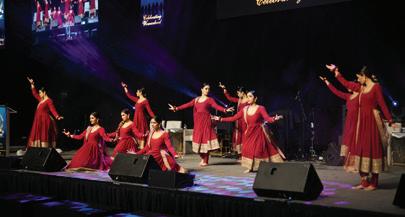




rey-Fleetwood Jagrup Brar, and MPs Randeep Sarai, Sukh Dhaliwal, and Tamara Jansen in attendance. The audience was also honored by the presence of Wally Oppal, former Attorney General and the first South Asian BC Supreme Court Judge, and Senator Baltej Dhillon, Canada’s first turbaned Sikh RCMP officer.
As the panel discussion concluded, the celebration continued with a grand dinner sponsored by Gagan Foods International, featuring a delicious and diverse array of cuisine and desserts.
The evening was brought to an electrifying crescendo with a performance by none other than Punjabi music legend Golden Star Malkit Singh, sponsored by Elegant Glass and Shower Mirrors. The dance floor quickly filled as guests swayed to his chart-topping hits, celebrating the night in full festive spirit.
Behind the scenes, the evening’s seamless execution was made possible by our amazing sponsors, whose support was instrumental in bringing the evening to life. Team DARPAN would like to take this chance to express our heartfelt gratitude to every brand that chose to support this initiative.
“Hosting the third edition of DARPAN Power Women of Influence has been a privilege. Each year, we are reminded of the power of storytelling, the strength of our community, and the importance of giving women a platform to shine,” shared Ramneek Dhillon, President of DARPAN Magazine, alongside Gurvinder Hundal, Founder of DARPAN Magazine. “We are grateful for the continued support and look forward to building more spaces where women’s voices are heard, celebrated, and empowered.”
As the night drew to a close, the message was clear: women are not just participating in today’s conversations—they are leading them. The DARPAN Power Women of Influence 2025 was not just an event; it was a movement—an affirmation of the strength, resilience, and brilliance of women, and a call to action for everyone to contribute to a more inclusive future.





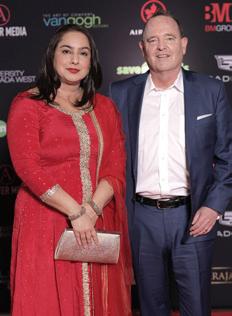






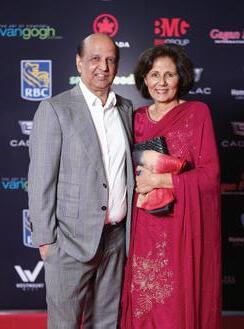

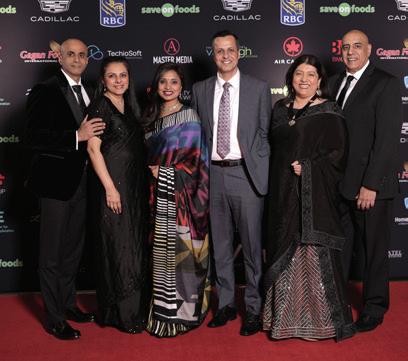

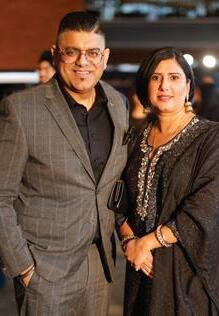
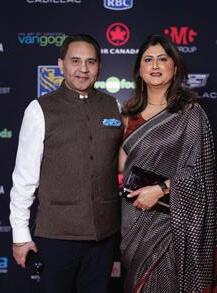
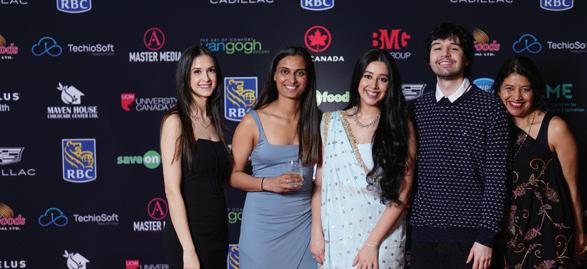






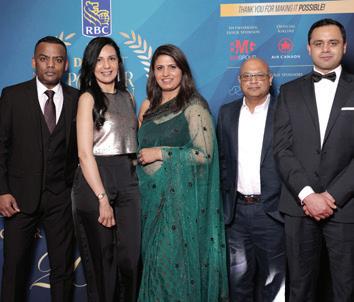





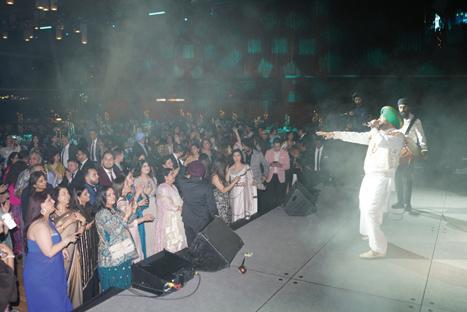
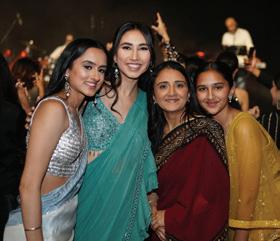
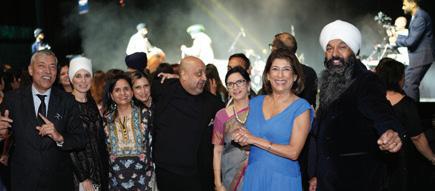

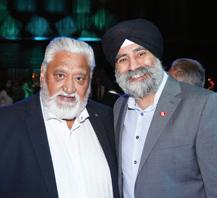


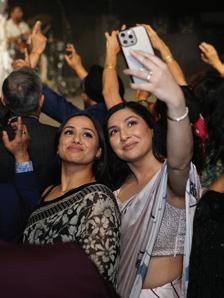




“Your hard work and dedication to organizing this event truly shone through. It was an inspiring evening that celebrated the achievements of some truly remarkable women. My sincere appreciation to each and every one of you at DARPAN for hosting this incredible gala. My team


This is an incredible event! Having two daughters, it really hits home. We are so proud to sponsor this evening. Congratulations to the entire team, continue to do meaningful things in the community; we appreciate it. ”
– Amar Bajwa, Director, Community Engagement, University Canada West
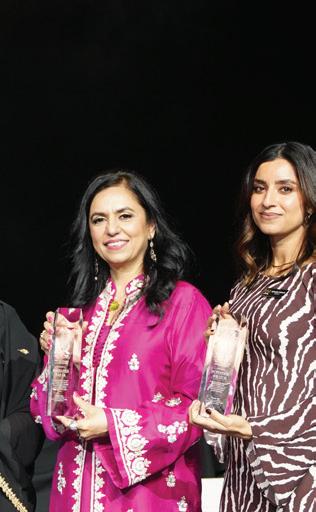
“Thank you so much for inviting me to your spectacular event. It was wonderful to meet such amazing “power” women and to learn about their stories. It was an evening full of shared laughter, joy, and celebration. Your team did a terrific job putting everything together. I go back with great memories, connections, and bonds.”
– Roshaneh Zafar Founder and MD, Kashf Foundation, Pakistan
Thank you for the won derful evening at the DARPAN Power Women of Influence event. The conversations and ini tiatives were inspiring, and the feedback has been overwhelmingly positive, thanks to your efforts. Your team's dedication made it unforgettable.”
– Kirsten Reinholz, Team Lead, Business Banking, BC Region, Scotiabank


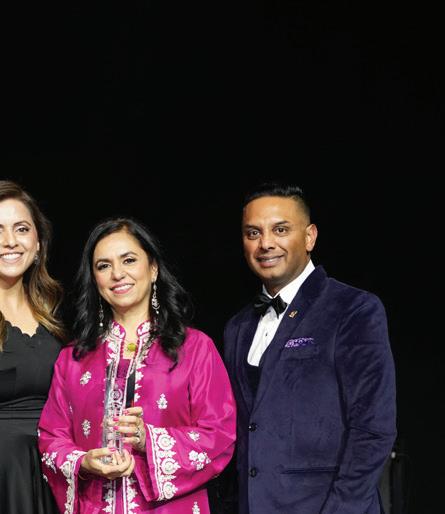
the way for a more inclusive future. Thank you, DARPAN, for highlighting these women from around the world who make our culture
– Vineet Verghese, Vice President, Commercial Financial Services, RBC
– Tamara Jansen, MP for Cloverdale, Langley City
It is so wonderful that, as a South Asian community, we have something like DARPAN, whose agenda is to find these gems and to give us a platform to speak and celebrate our work. It feels very reassuring. Thank you for having me! ”
– Supinder Wraich Award Winning Canadian Actress, Writer and Creator

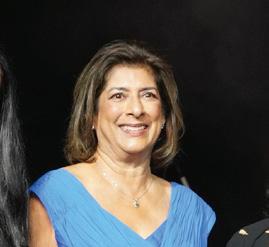
Congratulations DARPAN Power Women of Influence organizers! The evening was unique and well-choreographed amid a quintessential Vancouver setting. And, simply, it was so much fun! ”
– Belle Puri Journalist and Reporter, CBC
“

“It was an honor to sit in the company of such accom plished women, who are mak ing a significant impact in their fields. These frank and honest conversations were the highlight of the evening.”
– Robin Gill, Founder, Robin Gill Communications
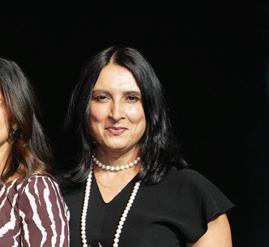
The event was absolutely magical! You could feel the sense of community, inspiration, and awe from everyone in the room. It is a night I will remember for the rest of my life.”
– Anoop Virk Executive Producer, TEDx Vancouver, TEDx Whistler, and Philanthropist

The evening looks amazing, and the location couldn't be any better! I'm so glad to be a part of this incredible panel of such inspiring women. Thanks for inviting me.”
– Farah Mohamed, Senator and Social Entrepreneur “

By Ancy Mendonza
At a time when Punjabi beats are all the rage around the world and rightly so, two Surrey artists are rewriting what it means to be global, brown, and unapologetically Punjabi. One’s a turbaned powerhouse whose soulful voice commands both trap and tradition. The other? A lyrical magician whose words jive perfectly between ancestral pride and genre-bending swagger. Meet Inderpal Moga and Chani Nattan—Surrey’s own duo who are not only riding the Punjabi music wave, they’re helping shape its tide.
Before they were lighting up international charts, both Inderpal Moga and Chani Nattan were just two kids from Punjabi households—raised on history and hustle.
“My first language at home was Punjabi,” says Chani, who was born and raised in Surrey to immigrant parents


who arrived in Canada in the ‘80s. “I was blessed to have Punjabi as my mother tongue. English came later—I really only started speaking it once I went to school.” But while most of his classmates were spinning mainstream pop, Chani was dialed into something else entirely. “The UK was dropping bangers,” he laughs. “RDB, B21, Panjabi MC, Tru Skool—it was a full-on Punjabi music era there. Even though we were in Canada, we were soaking up those vibes like it was our own. I grew up burning CDs, and eventually, when I got out of high school, I started writing music.”
Initially, he wrote songs because it was something that came naturally to him. It was only after high school, he started taking it seriously, “I realized it was more than just a shauk,” he shares. “I had always been writing. I still remember - Grade 8, I submitted a poem for a speech competition. It got picked, but I pulled it out because I was scared my friends would make fun of me.”
Chani was fortunate to have Music Producer Intense show him the ropes growing up. “He was a friend of my older brother, and I would hang out at his studio, learning from him and the artists he worked with.” What really validated his passion for songwriting was when Diljit Dosanjh collaborated with Chani to create the hit song ‘Umbrella’: “I was able to write for someone whom I admired. It made me feel I was doing something right.”
Chani started his career writing songs about the Sikh faith and the struggles the community faced. “Growing up, my dad often invited Sikh Kavishris home, and I took a liking to it,” he says. “I always wanted to give back to the community, so I wrote religious music, commemorating the history of my ancestors and faith.” He continued creating soulful tracks for two years and then transitioned to commercial music in 2019.
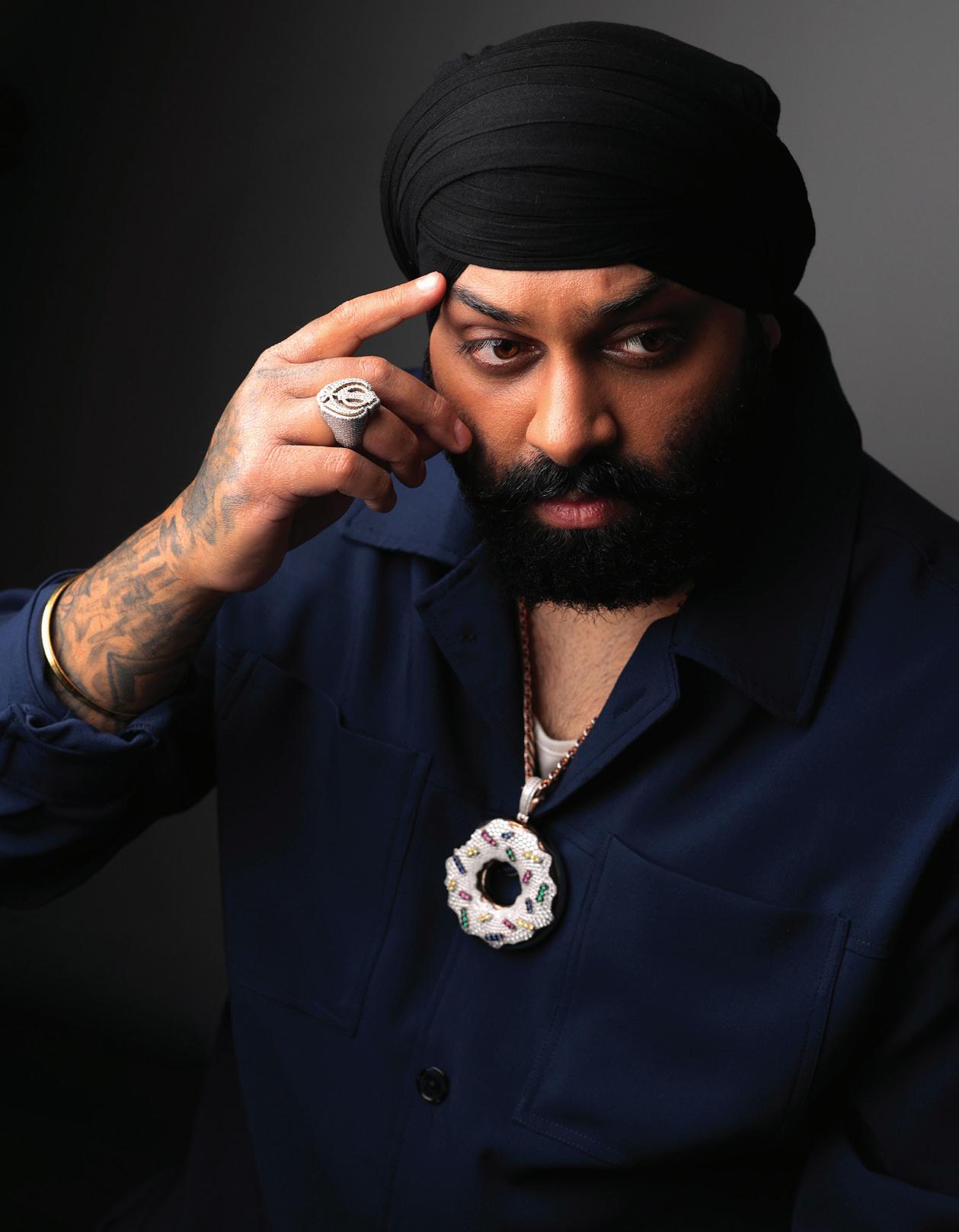
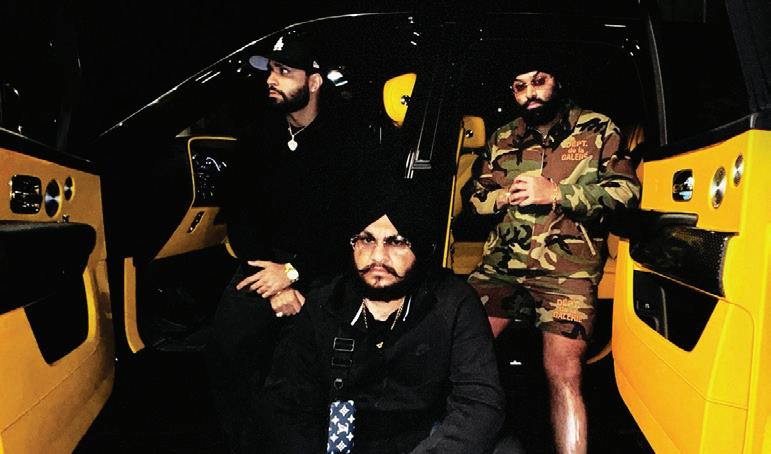
Inderpal’s journey to music began halfway across the world in Punjab, where he sang Kavishris and performed at school events and religious gatherings from an early age. When he moved to Canada’s Surrey seven years ago, he brought that fire with him: “I came to Canada to make music and showcase my talent to everyone.”
Balancing a job with his passion, he squeezed in studio time on his off hours, chasing a dream with no guarantees. “I recorded a song and sent it to 500 artists,” Inderpal laughs. “Just cold messaging anyone who might listen. I was trying to get noticed. All any artist wants is a little love back.” Only one per son answered. That person was Chani.
Chani had recently written a song that fit a modern style trap beat, and was on the hunt for a singer who would do it justice. “When I first heard Inder pal, I thought his voice was something different,” he tells DARPAN. “Inderpal could really adapt to different beats. Trap, bhangra, R&B—he caught beats fast, and that’s what I really liked.”
“I was blessed that Chani was the one who noticed my song,” beams Chani. “It does not feel like work when I’m around him, it's like I’m making music with my brother. After listening to Inderpal’s first song, the duo decided to meet at a studio: “And the first time we met, we recorded ‘Rockstar.’ Just like that.”
What began as a professional link-up quickly transformed into some-
"I was blessed that Chani was the one who noticed my song. It does not feel like work when I’m around him, it's like I’m making music with my brother."
- Inderpal Moga

thing deeper. “We’re in sync now,” Chani says. “If I write something, he already knows how it’ll sound. I don’t have to say much. We think the same. It’s all about the music we are creating together.” Their musical relationship clicked because it was grounded in something authentic: a shared love for Punjabi culture, a hunger to express it, and a brotherhood that feels less like a working relationship and more like destiny.

Their turning point? A track called DAKU—the moody, high-octane anthem that catapulted them into global recognition.
“When we dropped it, we didn’t think anything of it,” Chani recalls. “We created the track, shot the video, and put it out—like we do with all our tracks. A year and a half later, it just blew up.” Blew up is putting it lightly. 1 billion streams on Spotify in India, over 200 million YouTube views, and a wave of new fans from every corner of the world. The track’s success was just the beginning for the winning duo. They continue to give the industry some major hits—8 ASLE, Facetime, Noormahal, Kharku Life, and so much more are lined up for the future. And they don’t plan to stop anytime soon!
Something’s brewing in Surrey, and it’s not just chaa! From AP Dhillon to Gminxr, Intense, and legends like Jazzy B, Surrey has quietly transformed into a Punjabi music capital.
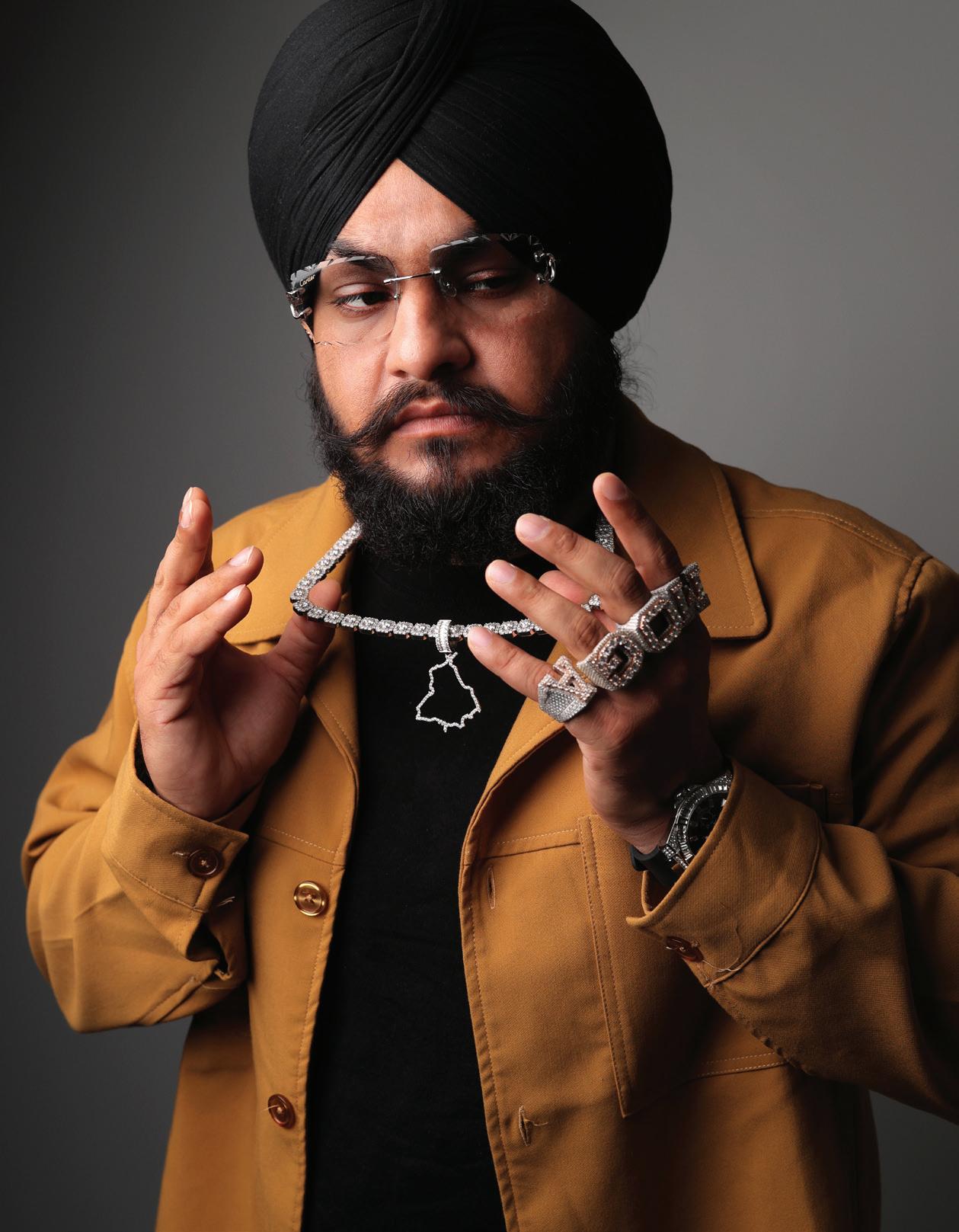

“There’s something in the water,” Chani jokes. “The city has given us so much love, freedom, and resources, and we try to give it back—that’s why we reference Surrey in our music so much. It gave us our vibe. It gave us our voice.” It also gave them each other. “There are so many studios now, so many outlets, so many ways to express yourself,” Inderpal says. “It wasn’t like this when we first got here. Now there’s a whole ecosystem.”
In 2025, the unthinkable happened: Inderpal Moga and Chani Nattan were nominated for a JUNO Award in the South Asian Music Recording of the Year category. “I was in disbelief,” Chani says. “I grew up listening to these artists. And now my name, and Inderpal’s name, is on the same list and we get to share the same room as them. It was surreal.”
What made it even more special? The JUNO performance with Jazzy B on ‘COOLIN’—the song they collaborated on. “We were pulling out of the Gurdwara when we got the call,” Chani recalls. “The whole family was in the car. The call was on speaker. Everyone went crazy when they told us we were to perform.”
For both artists, visibility is as important as the music itself.
“There weren’t a lot of sardars with turbans and beards in the industry when I was growing up,” Chani says. “I only had Fateh to look up to. Now you’ve got me, Inderpal, Sukha, Wazir Patar, Sardar Khehra—it’s a different era.” And it’s not just about showing up. It’s about
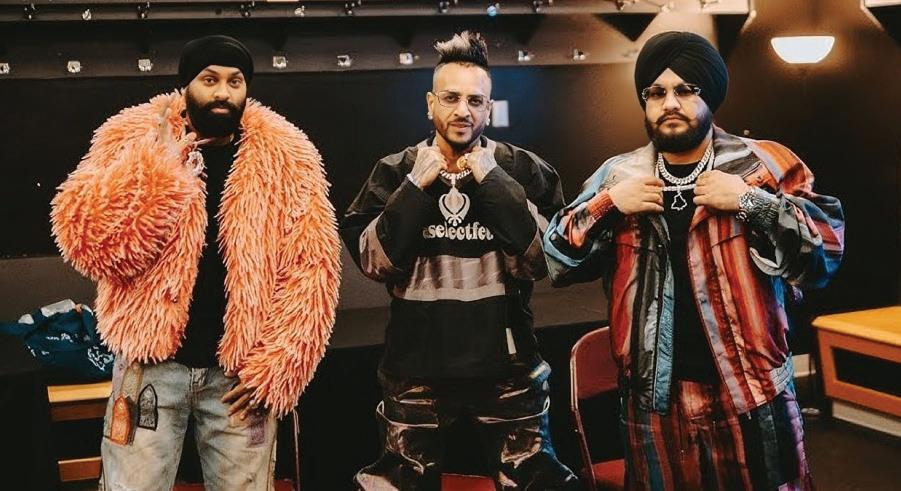



"Every major label is looking at Punjabi music. Universal, Sony, Warner—they’re
all taking it seriously now. Punjabi music is in boardrooms. It’s in ad campaigns. It’s in spaces where we were never seen before."
- Chani Nattan
being proud while doing it. “I kept my image,” he says. “And I’m glad I did. Because now the next generation sees us, and feels proud too.”
With the launch of 91 North Records—a joint initiative by Warner Music Canada and Warner Music India—Punjabi artists are now being backed at the highest levels of the music industry.
“Every major label is looking at Punjabi music,” Chani notes. “Universal, Sony, Warner—they’re all taking it seriously now. Punjabi music is in boardrooms. It’s in ad campaigns. It’s in spaces where we were never seen before.” From Coachella to the Met Gala, from Bollywood takeovers to Hollywood soundtracks—the genre is not just crossing borders, it’s kicking down doors.
Their latest milestone? The release of their debut album, Nice Day in the Pind—a vibrant, genre-bending record that fuses nostalgic feels with next-gen production. “It’s our most personal work yet,” Chani says. “And now we’re prepping to release a new single, something totally different. Imagine an R&B-Punjabi-Qawwali fusion. That’s what’s coming.” The excitement is contagious because with Chani and Inderpal, you never know what the next drop might sound like. Only that it’ll be unapologetically Punjabi. Unmistakably Surrey. And undoubtedly global.
From kavishris to Coachella, from burnt CDs to billion-stream bangers, this is more than just music. It’s history in the making.

By Naina Grewal
Mother’s Day in May and Father’s Day in June are two occasions that give us the perfect opportunity to reflect on the profound impact our parents have had on our lives. They are not just caregivers but our first teachers, imparting lessons that shape who we become. Their teachings go beyond words, showing us through their actions, sacrifices, and unwavering love. For this article, we reached out to members of the community, asking them to share the most important life lesson they learned from their parents. Their heartfelt stories serve as a tribute to the values, wisdom, and love passed down from one generation to the next. These reflections not only honor our parents but also inspire us to carry forward their teachings in our own lives.
PICTURES COURTESY: WWW.SHUTTERSTOCK.COM, TARANNUM THIND, PARDEEP NAGRA, AZRA HUSSAIN, DR. PARGAT SINGH BHURJI, NISHA KHARE, DR. SUKHMEET SINGH & SUHANA GILL

THIND Podcast Host/Producer, Chai with T
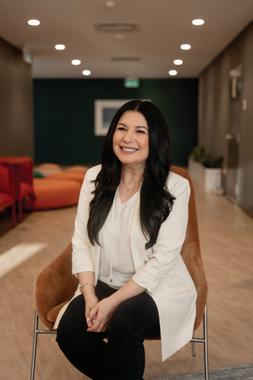
Simply by observing my parents, I learned one of the most important lessons: to pursue what you love with passion and humility. Watching them dedicate themselves to the performing arts showed me the power of hard work, staying grounded, and following what inspires you. They never imposed their dreams on my brother and me. They just wholeheartedly believed in ours. That quiet trust gave me the space to discover my own passion for broadcasting and build a career doing what I love.

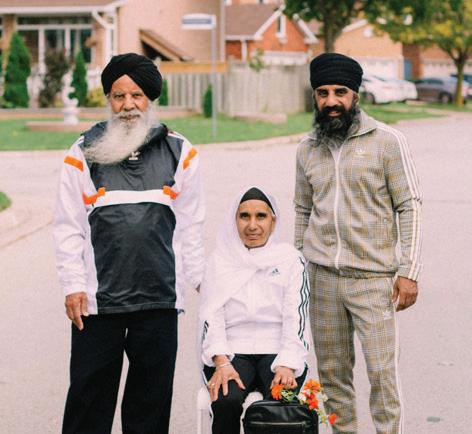
AZRA HUSSAIN
Interim CEO, Elizabeth Fry Society of Greater Vancouver
My father was the embodiment of selflessness and generosity. He instilled in me confidence, integrity, and the importance of giving back and supporting the community. His values shaped who I am today and continue to guide me. I strive to honor his memory by living with purpose, giving with intention, and upholding the principles he cherished, ensuring that his legacy lives on through my actions and the values I pass forward to my children.
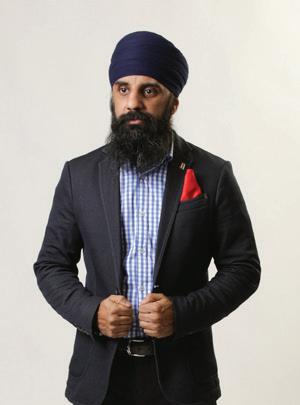
PARDEEP NAGRA
Executive Director, Sikh Heritage Museum of Canada
One of the most important roles a parent has is that of a teacher. Yes, as a student, there is book knowledge and memorizing facts, numbers, and formulas, but the lessons and experiences taught by my parents cannot be found anywhere else. Civic engagement is not in books; it is in living it. Seva and selfless service are not about memorization; they are about practicing them. Identity is not about numbers; you must believe and nurture it. Resilience is not formulas; you must have it and overcome hardships and obstacles. Thank you, Mom and Dad, for your teachings and lessons.




FRCP (C) Pediatrician
My parents taught me unconditional love, faith, honesty, and integrity. Their teachings shaped who I am. Despite their absence, their wisdom guides me daily. I grew up in a large joint family, surrounded by values of respect, service, and spirituality. Our home resonated with prayers and Gurbani, instilling faith. My mother, a Partition survivor, and my father, a businessman, showed resilience and grace. Their legacy lives on in me, shaping my values and guiding my journey.

Co-Founder of Human Biography & Women of Wonder; Global Storyteller, Speaker & Conscious Healer
My father, Virendar (Vern) Manhas, the first Indian to settle in Prince George, taught me that courage and vision can build new worlds. His legacy lives in the stories I now elevate through Human Biography. My mother, Nimmi (Jaswal), has turned deep loss into presence and joy. She inspires my work with Women of Wonder Global, where women rise through connection and inner power. Their values shaped me—as a storyteller, leader, and healer.

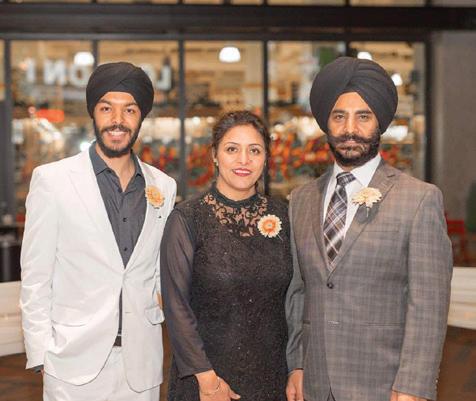

Political Science Student and Former Women’s Representative at KPU
As a first-generation Canadian, I have witnessed the sacrifices and resilience my parents embodied to build a better life for my brother and me. My mother taught me that true success lies in unwavering dedication, not outcomes, and my father showed me the power of choosing wisdom over emotion. Their strength, love, and light have shaped every part of who I am. I pray they remain my guiding stars in every lifetim—my first teachers, my soulmates.

More than just a life lesson, my parents taught me the profound value of seva, the selfless service that lies at the heart of Sikhism. From childhood, they instilled this guiding principle, shaping both my professional pursuits and daily actions. By embodying the saying, "Maan neeva maat uchi," they demonstrated the significance of humility and placing the community's needs above one’s own. Their example inspires me to serve others with compassion and dedication.




As British Columbia navigates a shifting economic landscape marked by global uncertainty, rising costs, and rapid population growth, Premier David Eby is focused on strategies that aim to strengthen housing access, bolster infrastructure, and ease financial pressure on British Columbians. In this in-depth conversation, the Premier discusses his government’s approach to short-term rentals in light of Vancouver hosting the FIFA World Cup, the rationale behind foreign buyer restrictions, what’s being done about the canceled grocery rebate, and progress on the long-awaited hospital in Surrey. From rental reform to immigration targets, here’s what the Premier had to say in a wide-ranging discussion.
"Our
goal with rental housing is
to have a healthy rental market, which means a vacancy rate of 3% or higher. That kind of rate ensures both landlords can rent their places and tenants can find housing."
Q: With summer coming and Vancouver being the host city for the FIFA World Cup next year, you are considering revisiting short-term rental regulations. Is there a timeline on this?
Our goal with rental housing is to have a healthy rental market, which means a vacancy rate of 3% or higher. That kind of rate ensures both landlords can rent their places and tenants can find housing. Right now, most communities haven't hit that mark. So until they do, we’ll keep short-term rental restrictions in place. But these measures are not meant to be permanent—they’re in place to protect rental housing stock during a time of shortage.
We’re building a lot of rental housing and are optimistic about working with a strong federal partner to increase that pace. I understand these restrictions may put pressure on people visiting the city during major events like FIFA. But our priority is the people who


live and work here—the same people who’ll be running the food stands and organizing the tournament.
There’s no set timeline, but rather a target: once a community hits that 3% vacancy rate, the legislation allows them to opt out of the restrictions. In the meantime, I encourage British Columbians to explore local travel. There are many great places to stay in B.C., and a lot of tourism-dependent communities aren't affected by the short-term rental rules.
Q: Do you think we should relax restrictions on foreign buying when it comes to real estate, especially in light of tariffs and the current stock market volatility?
It’s an important conversation. The initial motivation behind foreign buyer restrictions, including the federal ban and our vacancy tax, was to stop homes from being bought and left empty purely as investment properties.
Now, the real challenge facing our industry is the need for capital to build housing—whether it’s rentals or homes for sale. So, we’re exploring ways to allow capital, including foreign capital,

to come into our market without driving up costs for British Columbians or reducing housing availability.
One innovative model is being tested on the old RCMP Heather Lands site in Vancouver. Government holds the first mortgage, and the buyer holds the second. This brings down the cost of purchase by about 30%. If successful, we believe this model can attract private capital while still making housing affordable. This is actually how Singapore built much of its housing stock.
We’re looking to replicate this with private partnerships once it’s proven to work. Similarly, we're encouraging foreign investment in purpose-built rental housing—again, with the condition that it adds to supply and affordability. These kinds of creative solutions are necessary given the pressure our growing population is placing on housing supply.
Q: Is there a timeline on the Heather Lands project you mentioned?
Yes, the first phase of that project is going to market in the coming months. If the model works—and we believe it will—we’ll move quickly to scale it with private sector involvement.
Q: Your government has scrapped the $1000 grocery rebate that British Columbians were expecting on March 31st. What measures are you putting in place now to help with affordability?
That rebate was a one-time measure we had planned during the election, before we saw some significant economic developments—particularly changes in the U.S. that impacted our economy. We had to make the tough decision to pause that initiative to ensure our budget had the flexibility to respond to threats and opportunities.
One of those opportunities came with the federal government's shift on carbon tax rules. That allowed us to eliminate the carbon tax for both individuals and businesses in B.C.—a more enduring form of support.
Beyond that, we’re accelerating 18 major infrastructure projects to grow our economy. That growth will give us space to introduce more affordability measures over time. For example, ICBC had a larger-than-expected surplus, and we returned some of that to drivers through rebates.
We’re focused on long-term, sustainable affordability—changes that support people not just once, but over the long haul.







Q: You once called ICBC a "dumpster fire." Where do things stand now? Are there further changes on the horizon?
We’ve made major reforms to ICBC over the past 4–5 years, and we’re now in a much better place. Rates have been flat for three consecutive years, and B.C. drivers enjoy some of the lowest rates and best benefits in Canada. That said, no system is perfect. Some groups were impacted in ways we didn’t anticipate. We committed to a full review, and that’s happening this year under Public Safety Minister Gary Begg. The review will gather public feedback to assess what’s working and what needs tweaking. Our aim is to ensure we maintain affordable insurance while also offering strong support to people when they’re involved in collisions.
Q: During the leadership of the late Premier John Horgan, Surrey was promised a new hospital. Yet, residents haven’t seen much progress. Is Surrey still getting a new hospital?
Yes, absolutely. The new hospital is well under construction. In addition, there’s a new renal care center going up at the Surrey Memorial site, and we’re working on the business plan for a new tower there as well.
But one of the most exciting developments is the new medical school that will be opening soon. It will train new doctors and medical professionals right here in the South Fraser region, which is critical for relieving pressure on emergency services.
We’ve also added more than 140 doctors at Surrey Memorial to address immediate capacity concerns. Still, I’ll be honest—I’m not satisfied with the pace of improvement in health care delivery south of the Fraser. That’s why we changed the leadership at Fraser
Health Authority. Everyone in B.C. deserves high-quality care, and Surrey is no exception.
Q: When will the new Surrey hospital be operational?
We’re still a couple of years out from having it fully built, staffed, and ready to serve patients. But interim measures are already in place to address the urgent needs of the community while construction continues.
Q: There’s been a noticeable drop in immi gration through the Provincial Nominee Program. You requested 11,000 immigrants, but B.C. received only 4,000. How concerned are you about this, particularly in terms of how Canada’s im age is perceived globally?
It's deeply concerning. British Colum bia needs skilled immigrants, and our Provincial Nominee Program is critical for targeting workers who are ready to contribute immediately—nurses, trades people, tech professionals.
To request 11,000 and receive fewer than 4,000 sends the wrong mes sage internationally, especially to skilled immigrants who are making decisions about where to go. It creates uncertainty and undermines confidence in Canada as a destination.
We’re in constant dialogue with the federal government to correct this. The needs of provinces have to be taken seriously, particularly when it comes to building our workforce and sustaining economic growth. We need a system that reflects those realities.



































By Shweta Kulkarni
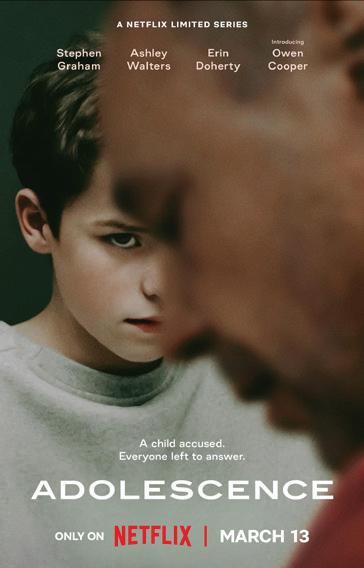

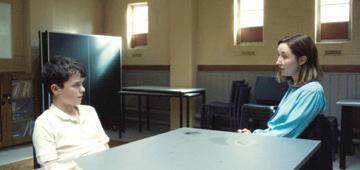

‘Adolescence’
You are perhaps living under a rock if you still haven’t heard about Netflix’s psychological crime drama series—Adolescence. While the series, developed by Jack Thorne and Stephen Graham, is hailed as a technical masterpiece, especially for its continuous one-take style of filming each episode, Adolescence also raises a number of complex issues, especially about the impact of social media on young children’s mental health.
Directed by Philip Barantini, this four-part, ground-breaking series delves into the severity of the emotional turmoil that peer pressure, digital conditioning, and online subcultures can cause, even on children from loving homes, pushing them into dangerous territories.
For the uninformed, set in a North England town, Adolescence follows 13-year-old Jamie Miller, who murdered his schoolmate Katie Leonard after she refused to go out with him. Un-
like the archetypical crime thrillers that usually point fingers at childhood traumas or dysfunctional families, Adolescence, with utmost raw honesty, explores why a child, despite a stable upbringing and nurturing parents, commits a horrific crime. As each episode unfolds, it forces viewers to confront some harsh realities of the cyber world and how young, impressionable minds can be heavily influenced by negative content. Adolescence brings to the fore topics like toxic masculinity, the incel movement, cyberbullying, the sinister layers of emoji language, and the manosphere, where influencers like Andrew Tate are responsible for the online radicalization of teenagers and peddling misogyny. As unsettling as this gripping series is, it also prompts a pertinent question: What can parents and caregivers do to protect children?
In this digital age, where everyone eats, sleeps, and breathes online content, unfortunately, the answer isn’t


that straightforward. As scary as it is, parents can’t entirely control everything that a child is consuming in digital space. But with the right approach, they can offer guidance and support, build trust, and try to protect their children from the evil, dark corners of social media.
A 2022 report suggests that nearly 90% of teens aged between 13 and 17 spend hours on several social media platforms each day. Furthermore, a 2024 WHO report states that 5% of adolescents have experienced cyberbullying, with the rates closely aligned between boys (15%) and girls (16%). And let’s face it, saying ‘no’ and dissuading teenagers from using social media entirely is not the answer. Hence, experts recommend that before imposing any parental restrictions, try to comprehend the child’s social media usage. Casual open-ended questions inquiring about the platforms they like, who they follow and why, how they interpret what they see on social media, and if there is anything or anyone that makes them uncomfortable. Such questions will help you assess their online consumption and behavior better. The key is starting conversations with them and creating a safe space, instead of lecturing, as it will help foster trust and strengthen your connection with them.
A study published in the Pediatric Research Journal highlights a strong link between parents' screen habits and increased screen time among adolescents. When children see their parents excessively use digital devices, they are much more likely to mirror that behavior. If you want to limit your children’s social media usage, you need to practice what you preach by balancing your digital habits too. You can’t spend hours mindlessly scrolling through feeds and expect your child to behave otherwise.
If your work requires you to be online for long hours, take the time to explain to them that your use of technol-
ogy is work-related. Whenever possible, practice digital detox and be mindful of your social media usage. Set time limits for your screen time and then ask your children to follow suit. The less dependent you are on devices and social media, the easier it is for you to set healthy digital boundaries for your children.
Pew Research Centre’s survey pointed out that teenagers are usually more cheerful and happy when they are not using their phones, emphasizing the importance of offline experiences. So, ensure that you set some screen-time rules and encourage your child to bond with family and friends, sans any use of devices.
For instance, establishing a no-devices rule during mealtimes will help them improve social interactions and encourage family-time conversations. Gently push your teens to pick up any outdoor/indoor activities with their friends that don’t involve screen time and playing video games in their rooms. Plan fun weekend activities like picnics, beach outings, pool days, hiking, skiing, skating, or bowling to create opportunities for real-world connections. The less dependent they are on screens, the more they can build stronger connections with people and discover the world beyond the internet.


Teaching kids digital etiquette and how to have respectful online interactions is crucial in today’s time. Begin by explaining what is acceptable and what is not. Teach them basic ethics of being a good human and courteous behavior in the digital space—not to gossip, spread rumors, body shame, disrespect, or harm someone’s reputation online or otherwise. Encourage them to use decent language and tone for all communication online and refrain from cyberbullying. Moreover, it’s vital to know that despite all the privacy settings, teenagers are likely to encounter all kinds of content on social media, but what’s essential here is to equip them with skills to fact-check the sources, condemn harmful narratives, and be respectful towards different perspectives. Educating them about digital footprints and encouraging them to think critically before sharing anything will help them navigate through the complexities of social media.
Sometimes, despite your best efforts, there is a possibility that your child may
















struggle with the darker side of the digital world and show signs of anxiety, depression, cyberbullying, and low self-esteem, directly or indirectly.
As parents, one should stay alert to sudden changes in behavior, especially if they spend a lot of time on their digital devices. If you notice anything concerning, don’t hesitate to seek professional help. The final episode of Adolescence raises an important question: Did the parents miss the signs of their son’s growing temper? Well, it isn’t easy to monitor minute details of your child’s behavior, but maintaining open conversations and being observant can help spot early warning signs.
As mentioned earlier, teenagers subconsciously absorb what they see in their surroundings. So, sometimes a harmless, casual joke about your partner in front of friends or family can influence their thinking of what’s acceptable, and when they see something similar online, it may not appear problematic to them. As impossible as it is to censor all of this, the least one can do is be responsible around your teens and teach boys (and girls) the difference between right and wrong. It’s as simple as that. Disrespect of any kind, even if it is disguised as a joke or a viral WhatsApp forward—should never be normalized. By exhibiting thoughtfulness in our everyday actions, we show them what healthy behavior looks like, both online and offline.



By Naina Grewal
In 2025, a growing number of Canadians are making a significant change in their travel plans by swapping United States (U.S.) vacations for homegrown getaways. Recent political developments in the U.S. have made some Canadians uneasy about crossing the border, prompting a surge in domestic travel across the provinces. Whether it’s camping in British Columbia (B.C.), exploring historic towns in Quebec, or experiencing Indigenous culture in the Prairies, Canada is becoming the vacation of choice.
While affordability and convenience are always factors in travel planning, this year, it’s about more than just dollars and distance. Political polarization, heightened tensions

"B.C. is a world-class destination, and tourism is one of our province’s most dynamic industries, contributing $22.1 billion in revenue and $9.7 billion in GDP to the province’s economy. We welcome people from all over the world, including Americans, to visit our beautiful province.”
Hon. Spencer Chandra Herbert
B.C.'s Minister of Tourism, Arts, Culture and Sport


around immigration, and concerns about personal safety are pushing Canadians to rethink their vacation destinations. As such, the number of Canadians traveling to the U.S. has dropped significantly, with many citing political reasons for their decision. It is also important to highlight a strong sense of national pride and a desire to support local economies instead.
According to Statistics Canada, in March 2025 alone, flights back from the U.S. dropped by 13.5% compared to last year, and road trips were down nearly 32%. The U.S. Travel Association warns that new tariffs on Canada could make this even worse. Canada is the number one source of international visitors to the U.S., with 20.4 million trips in 2024 bringing in $20.5 billion and supporting 140,000 American jobs. A 10% drop in Canadian travel could mean 2 million fewer visits, $2.1 billion in lost spending, and 14,000 lost jobs. States like Florida, California, Nevada, New York, and Texas, especially popular for shopping, may be hit the hardest.
Meanwhile, as Canadians pivot toward domestic travel, the tourism industry across the provinces is experiencing a welcome boost. B.C., in particular, has emerged as a top destination for both locals and international visitors. The office of the Honorable Spencer Chandra Herbert, B.C.'s Minister of Tourism, Arts,

Culture and Sport, emphasizes the province's appeal: “B.C. is a world-class destination, and tourism is one of our province’s most dynamic industries, contributing $22.1 billion in revenue and $9.7 billion in GDP to the province’s economy. We welcome people from all over the world, including Americans, to visit our beautiful province.”
One of the most noticeable shifts in travel trends is the rising popularity of outdoor travel. Camping remains a top choice, and the provincial government has been investing to meet that demand. “Camping continues to be more popular than ever, with more
"Destination BC continues to promote travel to the province to domestic and international visitors in key markets such as the U.S., United Kingdom, Germany, Australia, Mexico, and China,” points out the Ministry of Tourism, Arts, Culture, and Sport.
“This includes always-on marketing in B.C”
Hon. Spencer Chandra Herbert






people visiting private campgrounds and B.C. Parks to connect with nature and enjoy the great outdoors,” shares the Ministry of Tourism, Arts, Culture, and Sport. “Since 2017, we have added more than 2,000 new campsites at B.C. Parks across the province, including new sites at Rolley Lake, Fintry Park and China Beach.”
The appeal isn’t limited to tents and trailers; eco-lodges, cultural tours, and local culinary experiences are also drawing Canadians to explore their own country. Whether it’s kayaking with whales near Tofino or enjoying a wine tour in the Okanagan Valley, these experiences offer the chance to reconnect with nature and Canadian identity. Tourism organizations like Destination BC are stepping up efforts to encourage Canadians to rediscover their country.
“Destination BC continues to promote travel to the province to domestic and international visitors in key markets such as the U.S., United Kingdom, Germany, Australia, Mexico, and China,” points out the Ministry of Tourism, Arts, Culture, and Sport. “This includes always-on marketing in B.C., Alberta, and Ontario, encouraging Canadians to explore the incredible and diverse travel experiences B.C. has to offer.” Undoubtedly, the results are starting to show. From hiking trails in Northern B.C. to city festivals in Victoria, local tourism operators are seeing an uptick in bookings, particularly for family travel and multigenerational vacations.

The shift toward domestic travel is also bolstering local events, which play a vital role in Canada’s tourism economy. These festivals, sports tournaments, and cultural celebrations bring vibrancy to communities while supporting small businesses. “Events are an important part of B.C.’s tourism, arts, culture and sports sectors,” reveals the ministry. “They bring economic benefits to communities, support local businesses, and enhance local tourism offerings.” Programs like the Destination Events Program (DEP), which provides $5 million in annual funding, help communities host events that attract overnight visitors, create jobs, and boost local economies. This funding complements support from other initiatives such as Creative B.C., the B.C. Arts Council and Community Gaming Grants.
Ultimately, while the U.S. will always be a close neighbor with a shared border and deep cultural ties, 2025 is shaping up to be a year when Canadians look inward—and upward—especially when planning their vacations. With stunning landscapes, vibrant cities, and meaningful cultural experiences, Canada offers everything travelers seek and more. As the Ministry of Tourism, Arts, Culture and Sport puts it, “We encourage people to take the opportunity to explore places in B.C. and Canada when you’re planning your next vacation. People come from near and far to experience B.C.’s natural treasures.”
Whether driven by politics, pride, or the pursuit of peace, Canadians are finding new reasons to stay home, and loving every minute of it!





By Mrinalini Sundar
Summer break is an ideal time to create lasting memories and keep kids entertained with a mix of fun and enriching activities. With a little creativity and planning, families can turn the summer months into a season of learning and connection. Themed days provide structure while leaving plenty of room for spontaneity and exploration. Here’s how you can craft a magical summer filled with excitement and growth.

Start the week with a burst of creativity by dedicating Mondays to arts and crafts projects that allow children to explore their imaginations. Children can collect leaves, flowers, and twigs to create stunning collages or prints, or set up an outdoor painting station where they can craft their masterpieces. Using recycled materials like old cardboard boxes and bottles to make unique toys or decorations is another great option. These activities not only engage children but also help develop fine motor skills and an appreciation for art and nature. For an added twist, consider incorporating storytelling with their creations. Encourage your child to tell a story about the artwork they've made, fostering both creativity and language development.
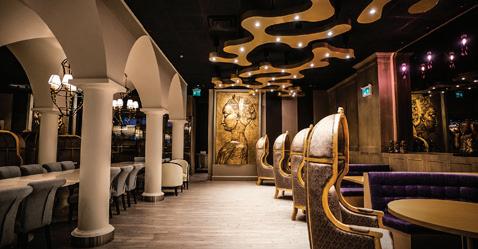
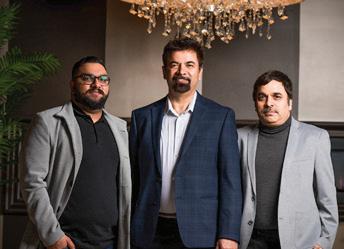


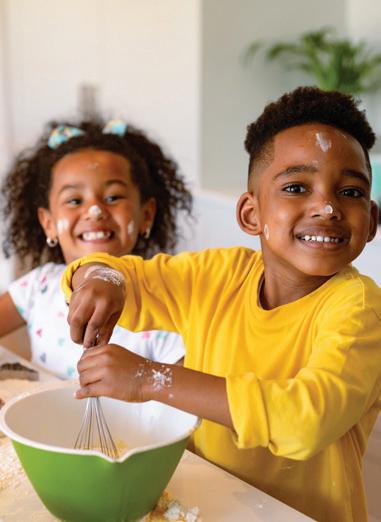
Tuesdays can be culinary adventures where the kitchen transforms into a classroom. Teach kids how to cook or bake something new every week. Explore around-the-world cuisines by choosing a country and making a dish from its cuisine, pairing cooking with a brief geography lesson. DIY pizza nights can be fun, allowing kids to choose their toppings and assemble their pizzas. For a mix of science and food, try making ice cream in a bag or baking soda and vinegar volcano cakes. Involving kids in meal prep builds their confidence and introduces them to new flavors and skills. You can also turn Tasty Tuesdays into a family cook-off where each member gets a chance to create their own unique version of a dish, encouraging a friendly competition.





Wednesdays are perfect for beating the heat with water-themed activities that promise laughter and cool relief. Families can create a backyard water park with sprinklers, water balloons, and slip-andslides, or organize DIY boat races using mini boats made from household items. Exploring water science experiments, such as investigating buoyancy and density, adds an educational twist to the fun. Water play is a fantastic way to burn energy and foster teamwork. You could also have a “water obstacle course” involving jumping through hoops, crawling under sprinklers, and running through the slipand-slide to add a competitive element.
Thursdays are all about stepping outside and discovering the world around you. Families can enjoy nature hikes by finding local trails and creating scavenger hunts for items like pinecones or bird feathers. Visiting local landmarks such as historical sites, museums, or botanical gardens can provide enriching experiences. In the evening, stargazing nights offer an opportunity to learn about constellations and the night sky. Outdoor activities instill a love for nature and curiosity about the environment. You could also create a “nature photography” contest where children use a camera or smartphone to capture their favorite moments in nature.







Fridays can focus on acts of kindness, teaching empathy and community spirit. Crafting for a cause by making cards or small crafts to donate to hospitals or senior centers is a wonderful way to spread joy. Families can also organize neighborhood clean-ups to pick up litter in local parks or contribute to a free little library by building or adding to it. Encouraging kindness helps children understand the importance of giving back and being part of a community.




Weekends can be reserved for family bonding and relaxation. Movie marathons with themed snacks and decorations provide a cozy way to spend time together. Backyard or campsite camping adventures can include stargazing, s’mores, and storytelling for a memorable experience. Gardening together, whether planting flowers or vegetables, offers a rewarding activity where families can watch their efforts grow throughout the summer. These moments strengthen family connections and create cherished memories. Additionally, create a “memory jar” where each family member writes down their favorite moment of the week to revisit at the end of the summer.

To make the most of your themed days, planning ahead is essential. Creating a calendar with daily themes and activity ideas keeps everyone excited and engaged. However, it’s important to remain flexible and allow room for spontaneous fun and rest days when needed. Involving kids in planning activities or suggesting themes fosters a sense of ownership and enthusiasm. Documenting the journey through a summer journal filled with drawings, photos, and stories adds another layer of engagement and provides a keepsake to look back on.
A well-planned summer isn’t just about keeping kids busy; it’s about creating a nurturing environment where they can grow, learn, and feel connected to their family and community. So, grab your calendar and start planning—an unforgettable summer awaits! It's not just about the activities themselves, but about the moments of connection, laughter, and shared experiences that will stay with you long after the season ends.


Spring has sprung, and with warmer temperatures, there often comes a change in our mental health— both negative and positive. It might be surprising to hear that for some people, sunshine can bring a sudden onset of discomfort and stress. Most of us, especially those who struggle with seasonal depression, welcome the longer days as they allow us to re-engage in social activities and connect with family and friends. However, longer days and more sunshine can be a significant source of stress for many individuals and families, especially those struggling with or supporting someone with bipolar disorder or with substance abuse issues. A phenomenon called “spring mania” is common among those with bipolar disorder and is triggered by more sunshine, which can disrupt circadian (the body's internal clock) rhythms. Additionally, spring and summer often mean an increase in social gatherings, which can be a source of stress for those who are working
through substance use issues. Social settings, alcohol, and substance consumption often go hand in hand, and there is an increase in both during the spring and summer months. The pressure to be social during the warmer months can be difficult for those of us who are more introverted, have social anxiety, or who struggle with setting and maintaining boundaries. So, how can we manage the increased pressures that come with longer days while still maintaining our mental health?
Many of us struggle with overextending ourselves, so it can be helpful to put social activities into a physical calendar. Visually seeing all of your activities can help you manage your schedule during busier months and ensure that you are not burning yourself out. It can also be helpful to block certain days or times that are just for you.

Dr. Shimi Kang MD, FRCPC
Mental Wealth, Addiction & Motivation Specialist, Global Speaker, Media Expert & #1
Best-selling Author, Clinical Associate Professor, UBC
Dr. Shimi Kang is an award-winning Harvard-trained doctor, researcher, and keynote speaker specializing in the science of motivation. She founded Future-Ready Minds, is the host of ‘Mental Wealth with Dr. Shimi Kang’ on YouTube, and is the author of the #1 national bestselling parenting book ‘The Dolphin Parent.’ Her work focuses on mental health, addiction, and brainrelated conditions, offering assessments and treatments like psychedelicassisted therapy and more.















During the summer months, there is an expectation to reconnect and socialize, which is great, but it’s equally important to spend time outdoors by yourself. Research shows that being in nature has a calming effect on the nervous system and is a great way to recharge your emotional battery. So, find a good book and a quiet spot on the beach and enjoy some time to yourself.
Self-reflect on boundaries you want to set during the summer months. Are you someone who overindulges in alcohol? Maybe you struggle to say no and often feel burnt out by August? Be honest with yourself. You can’t do the work if you don’t know where to start. Therapy can be a great place to reflect on your triggers and how you can start setting boundaries.
Once you’ve figured out your boundaries, lean on your loved ones for support. Maybe you need help staying sober during a wedding, or perhaps you want to practice saying “no” more without feeling the need to over-explain. Share with your loved ones what you are going
through and ask for support where possible.
Summer is an excellent time of year to reconnect with friends, family, and the outdoors, but don’t forget to connect with yourself as well. Remember, you are not alone in your struggles, and there is no expectation that summer and sunshine mean a stress-free time for everyone. You got this & if not, reach out for help!

Counsellor, MA, RCC
Compassionate Journey
Counselling
Manjot Mann is a Registered Clinical Counsellor with a Masters in Counselling Psychology from Yorkville University. She works with adults and families from various backgrounds, helping them navigate their past experiences while working towards a vibrant future. Manjot is passionate about supporting her clients as they uncover their strengths and potential. In addition to her counseling practice, she offers valuable advice through her successful column, ‘Ask Manjot,’ where she discusses topics around mental health and navigating cultural expectations, boundaries, and more. You can find Manjot on Instagram at @askmanjot.



By Natasha D’souza
Before air conditioners and iced lattes took over our summer survival kits, our ancestors had their own clever ways of staying cool—which didn’t involve a single freezer aisle! From soothing herbal infusions to pitta-balancing meals and moonlit strolls, the ancient wellness systems of Ayurveda and Unani were already serving up serious chill long before “hydration” became a hashtag.
While Ayurveda focuses on balancing the three doshas—Vata (movement), Pitta (transformation), and Kapha (stability)—to promote harmony in the body and mind, Unani centers on the balance of the four humors: blood, phlegm, yellow bile, and black bile to maintain physical health and emotional well-being.
This summer, we’re flipping through the pages of ancestral wisdom, tapping into time-tested rituals, cooling elixirs, and natural regimens that not only help you beat the heat but also leave you feeling balanced, refreshed, and yes, glowing (the non-sweaty kind).


Forget sugar-loaded sodas, your great-grandparents were blending drinks that cooled from the inside out! Both Ayurveda and Unani offer refreshing options.
Ayurveda suggests buttermilk (chaas), a light, probiotic-rich drink spiced with cumin or mint, ideal for soothing the digestive system and hydrating the body. Amla juice, packed with Vitamin C, also acts as a natural coolant, boosting immunity and provid ing relief during hot weather.
On the Unani side, Sharbat-e-Anar, a sweet and tangy pomegranate cooler, is renowned for its ability to reduce body heat. For a unique twist, khus and sandalwood-infused drinks offer a fragrant, earthy flavor that leaves you feeling calm and refreshed. Add a pinch of fennel or basil seeds for that extra ancient touch.




Summer is the Pitta season in Ayurveda, and fiery foods only make things worse. Unani agrees, recommending a lighter, water-rich diet to keep body heat in check.
What’s on the ancestral plate? Watermelon, cucumber, ridge gourd, coconut, barley, and soaked sabja (basil) seeds. Add to that list mint, fennel, zucchini, lettuce, curd (plain yogurt), and ripe mangoes in moderation. Tender coconut water, rosewater-based drinks, and aloe vera juice also make excellent additions to stay hydrated and balanced. Say no to spicy, fried treats and heavy meats during peak hours; they only turn up the internal thermostat and leave you bloated and sluggish. Bonus: your digestion gets a break, too!

Long before serums and sheet masks, your ancestors had summer skincare down to a science—simple, natural, and wildly effective.
In Unani tradition, rose water and multani mitti (Fuller’s Earth) were the original toner-mask duo, cooling and clarifying the skin without stripping it. Zamzam water and camphor-infused oils were used to purify and soothe, while ubtan pastes made from herbs and pulses acted as exfoliators and complexion boosters. Ayurveda leaned on aloe vera and turmeric to calm heat rashes and sun-exposed skin. Manjistha (Indian Madder) was prized for purifying the blood, neem-paste tackled acne, and raw milk served as a gentle, natural cleanser. These aren’t just DIY hacks—in a world of complicated skincare routines, this is clean beauty at its most powerful.
Both Unani and Ayurveda place great emphasis on eye health during summer, considering that the eyes are especially sensitive to heat.

Ayurveda and Unani weren’t just about what you ate, they emphasized how you lived. And summer came with its own rulebook.
Avoid intense workouts at noon; instead, exercise in the cooler early mornings or evenings. Embrace the power of a short afternoon nap to recharge. Dress in light cottons, linens, and pastels to stay cool and comfortable. Lastly, try moon-bathing—it’s not just romantic, it’s medicinal too! Whether you take a moonlit stroll or simply sit outside under the stars, this calming practice helps you reconnect with nature and regain a sense of peace and vitality amid the daily hustle.

Their go-to remedies? As gentle as they are effective. Rose water compresses soothe tired eyes, Triphala eyewash cleanses and cools, and cotton pads soaked in sandalwood water reduce inflammation. Basically, they perfected the original under-eye treatment… no fancy tools required.
Ayurveda and Unani remind us that summer isn’t something to survive—it’s a season to sync with. So this year, skip the slushies and lean into time-honored coolers, mindful routines, and natural care approved by the ancestors. Your body will thank you!

By Mrinalini Sundar
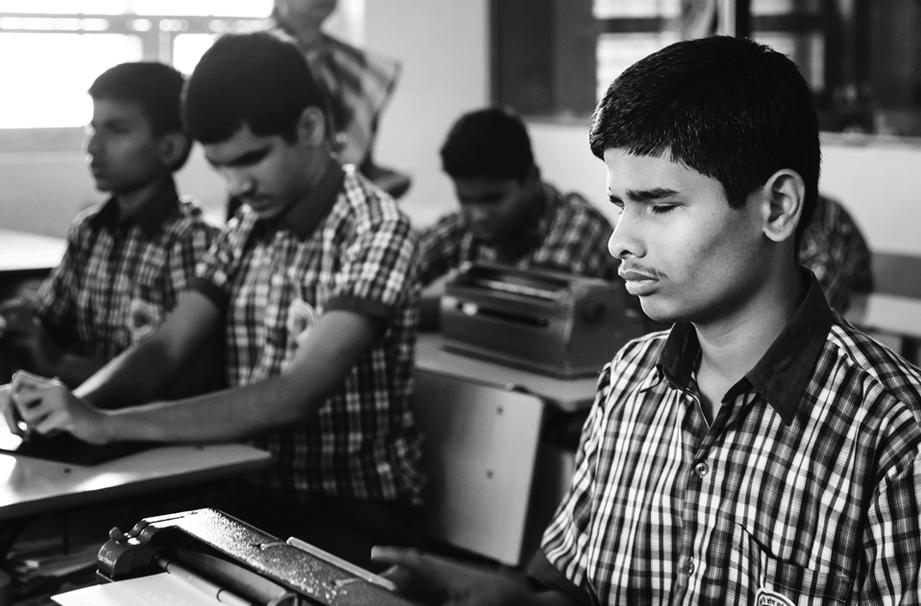
For over eight decades, The Poona School and Home for the Blind has stood as a beacon of hope and empowerment for visually impaired children in Pune, India. Established in 1934 by the visionary Dr. SR Machave, the institution has grown into a sanctuary where dreams flourish, independence is nurtured, and societal integration is achieved. Today, the school proudly continues its mission under the capable leadership of a dedicated team that oversees the education, well-being, and development of its students.
Dr. SR Machave envisioned a space where visually impaired children could thrive without being limited by their disabilities. His dream was to create an inclusive environment where these children could learn, grow, and contribute to society as equals. Over the years, this vision has been upheld and expanded, thanks to the unwavering commitment of educators,
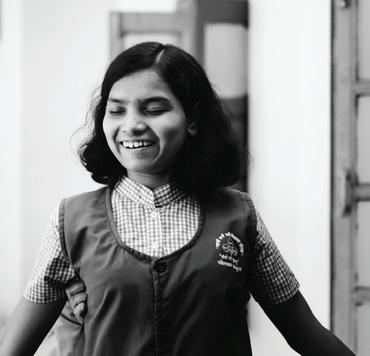
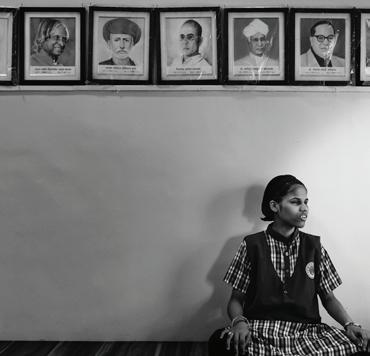
caregivers, and volunteers. In a heartfelt statement, Mrunalini Pawar, a committee member, shared, “We believe in empowering our students to not only overcome their limitations but to excel in ways that inspire others. Every child here is a testament to resilience and possibility.”
The Poona School provides a holistic educational experience, starting from

pre-primary classes where children are introduced to Braille and sensory training. Primary education is offered up to the 8th grade within the institution, after which students transition into sighted schools to complete their 10th standard as part of an integrated education system. The curriculum is enriched with vocational training programs aimed at fostering self-sufficiency, particularly for young girls. Currently, the school is home to over 150 students, each receiving free educational and residential facilities.
The Boys’ School in Koregaon Park and the Girls’ School in Kothrud provide nurturing environments that cater to the unique needs of their students. Teachers and support staff work tirelessly to ensure each child’s academic and personal development is prioritized.
Beyond academics, the institution organizes various extracurricular activities, health check-ups, and skill-building workshops to ensure comprehensive development. Regular medical examinations cover eye health, dental care, and overall well-being, while recreational programs include storytelling sessions, music lessons, and art workshops. For instance, students regularly participate in cultural events and performances that not only
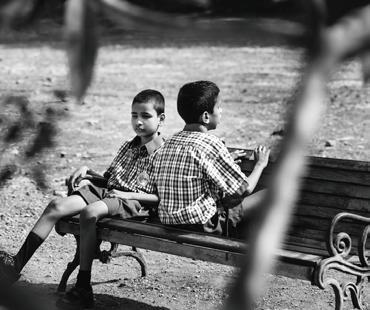
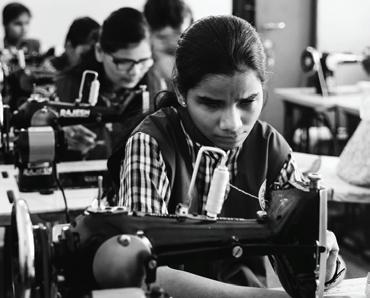
"
We believe in empowering our students to not only overcome their limitations but to excel in ways that inspire others. Every child here is a testament to resilience and possibility.”
- Mrunalini Pawar Committee Member
build confidence but also showcase their talents to the larger community.
The vocational training center is a cornerstone of the institution’s offerings. Here, students learn practical skills such as weaving, candle making, and crafting. These activities provide them with avenues for self-reliance and financial independence. The handcrafted goods produced by the students, including candles, mats, and other decorative items, have garnered widespread appreciation and contribute to their sense of accomplishment.
A typical day at The Poona School begins with morning prayers and physical exercises, fostering a sense of discipline and mindfulness among students. Classes follow, where children engage in Braille reading, tactile learning, and academic studies. Afternoons are reserved for creative pursuits, skill-building activities, and recreational play. The holistic schedule ensures a balance between learning and leisure, nurturing well-rounded individuals.
The school also emphasizes the importance of community engagement. Students often interact with volunteers, donors, and visiting professionals who provide additional learning opportunities and exposure to the world beyond the school’s premises.
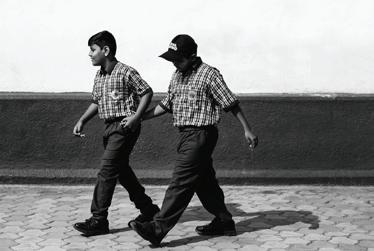
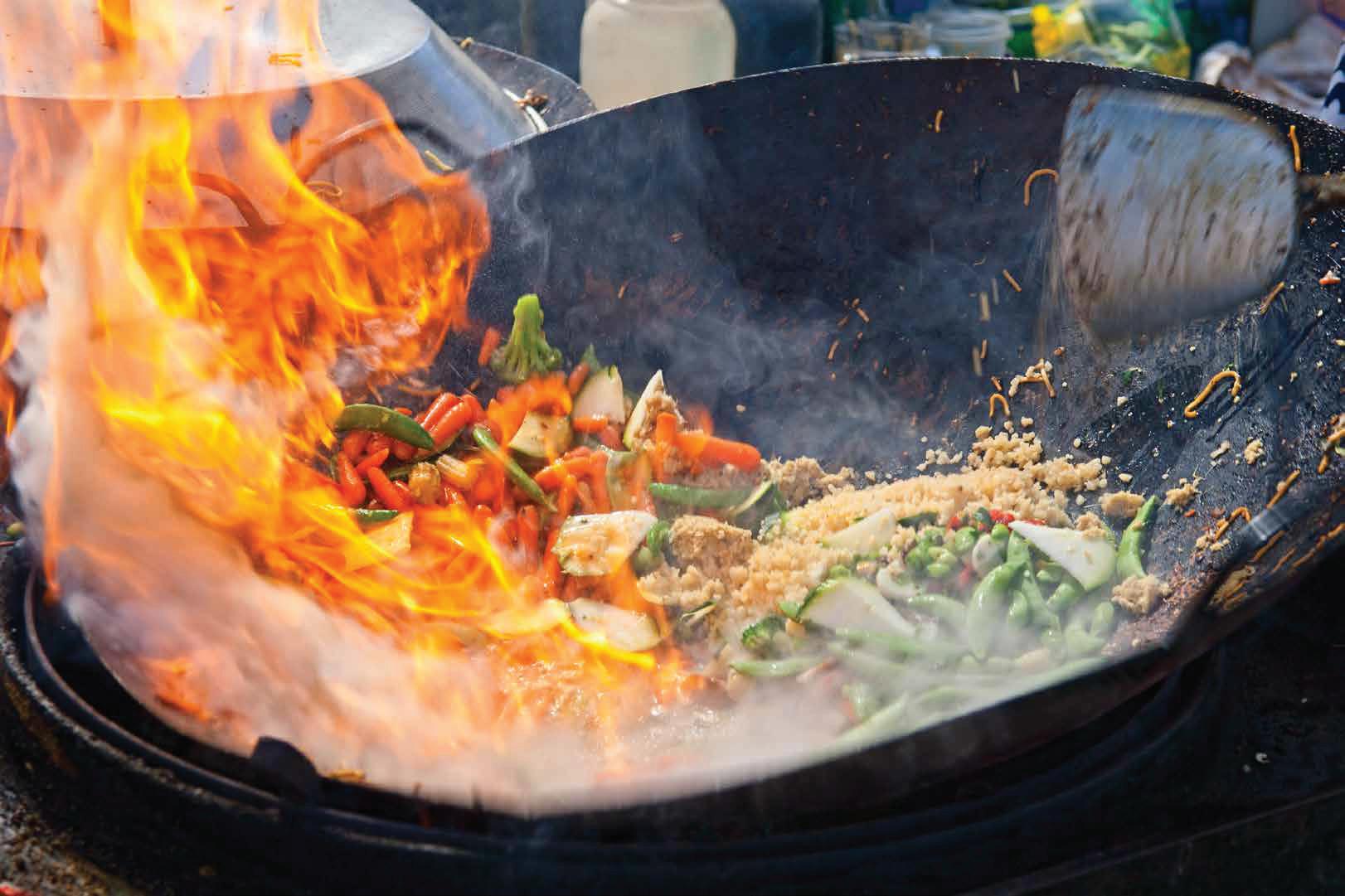

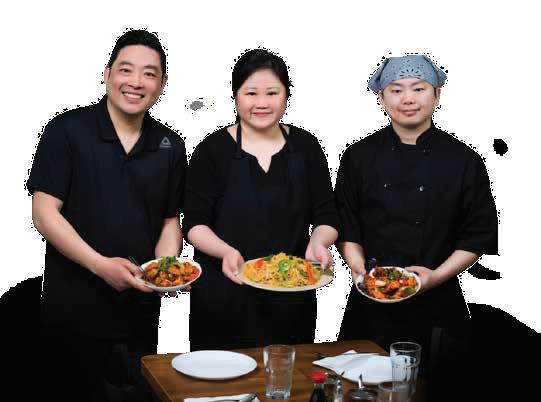



Chef Gurjyote Sethi is an internationally trained culinary expert with over 25 years of experience across premier hospitality brands like Taj, Marriott, and Fairmont. A graduate of the Institute of Hotel Management, New Delhi, he’s cooked for dignitaries including Indian Prime Minister Narendra Modi and Canadian ministers. After honing his craft globally, he founded GJ’s Kitchen in Vancouver. Chef Sethi has been featured on CTV, Global BC, Spice Radio, and Red FM, and is celebrated for blending traditional Indian flavors with global cuisine. His culinary excellence is reflected in glowing reviews across media, food blogs, and social platforms.

• 1 lb paneer, cubed
• 1 green bell pepper, diced
• 1 red bell pepper, diced
• 1 red onion, diced
• Pineapple peeled and diced
• Cilantro, finely chopped
For the marinade:
• 1 teaspoon anardana powder (pomegranate seed powder)
• 100 ml whipping cream
• Juice of ½ a lemon
• ½ cup Greek yogurt
• 1 tablespoon Kashmiri chili
• 2 teaspoons mustard oil
• ¼ teaspoon black pepper powder
• Salt to taste
• 1 teaspoon cumin powder
• 1 teaspoon garam masala powder
• 1 teaspoon chaat masala
• 1 tablespoon garlic paste
• 1 tablespoon ginger paste
• Butter to baste
• Mix all of the marinade ingredients in a large bowl and check for seasoning. Add paneer, peppers, onions, pineapple, and cilantro.
• Ensure that the vegetables and paneer are well-coated with the marinade. Cover the bowl and refrigerate for 2 hours.
• Preheat your oven to 350°F. Soak bamboo skewers in a bowl of water.
• Take one bamboo skewer at a time and thread the marinated vegetables and paneer alternatively onto it.
• Place the paneer skewers onto a tray with parchment paper. Bake for 2 minutes. After 2 minutes, set oven to broil for color and turn skewers alternately. Continue basting with melted butter when turning, until evenly cooked on all sides. Do not overcook as the paneer will become hard.
• Once evenly cooked, remove the tray from the oven and serve with mint chutney.
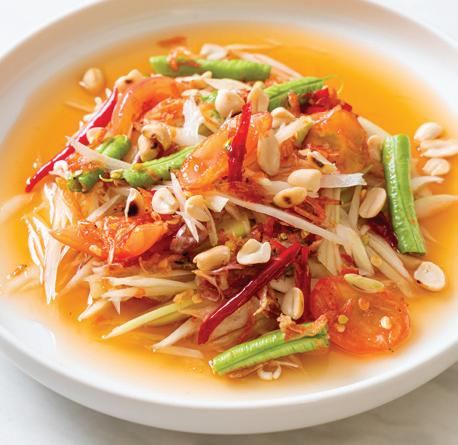
For the marinade:
• 2 tablespoons garlic, roughly chopped
• 2 bird eye chilies, roughly chopped with seeds (adjust according to spice level)
• 1 cup palm sugar, grated
• ½ cup lime juice
• ½ cup soya sauce
• ½ cup rice wine vinegar
• Salt to taste
For the salad:
• 1 cup roasted peanuts, unsalted
• 5 string beans, cut in small 1-inch pieces
• 3 cups cherry tomatoes, cut in half
• 500 gms green papaya, shredded
• 2 semi ripe mangoes, shredded
• 10 Thai basil leaves
• Pound peanuts lightly and break them into smaller pieces. Transfer to a bowl.
• Pound garlic and chili into a paste. Stir in palm sugar, lime juice, soya sauce, and vinegar until sugar dissolves. Pour the dressing into a large bowl.
• Heat a nonstick grill pan or grill over high heat and grill the green beans until they are just charred and still very crisp. Add it to the dressing with cherry tomatoes.
• Add papaya, mangoes, and 3/4 of the peanuts. Toss well
• Serve: Once everything is coated in the dressing, immediately pile it up onto plates. Spoon over some dressing. Garnish with Thai basil leaves and sprinkle with remaining peanuts.











Label DiyaRajvvir’s Hawa
Hawaii collection is a sartorial celebration of color, craftsmanship, and effortless elegance.
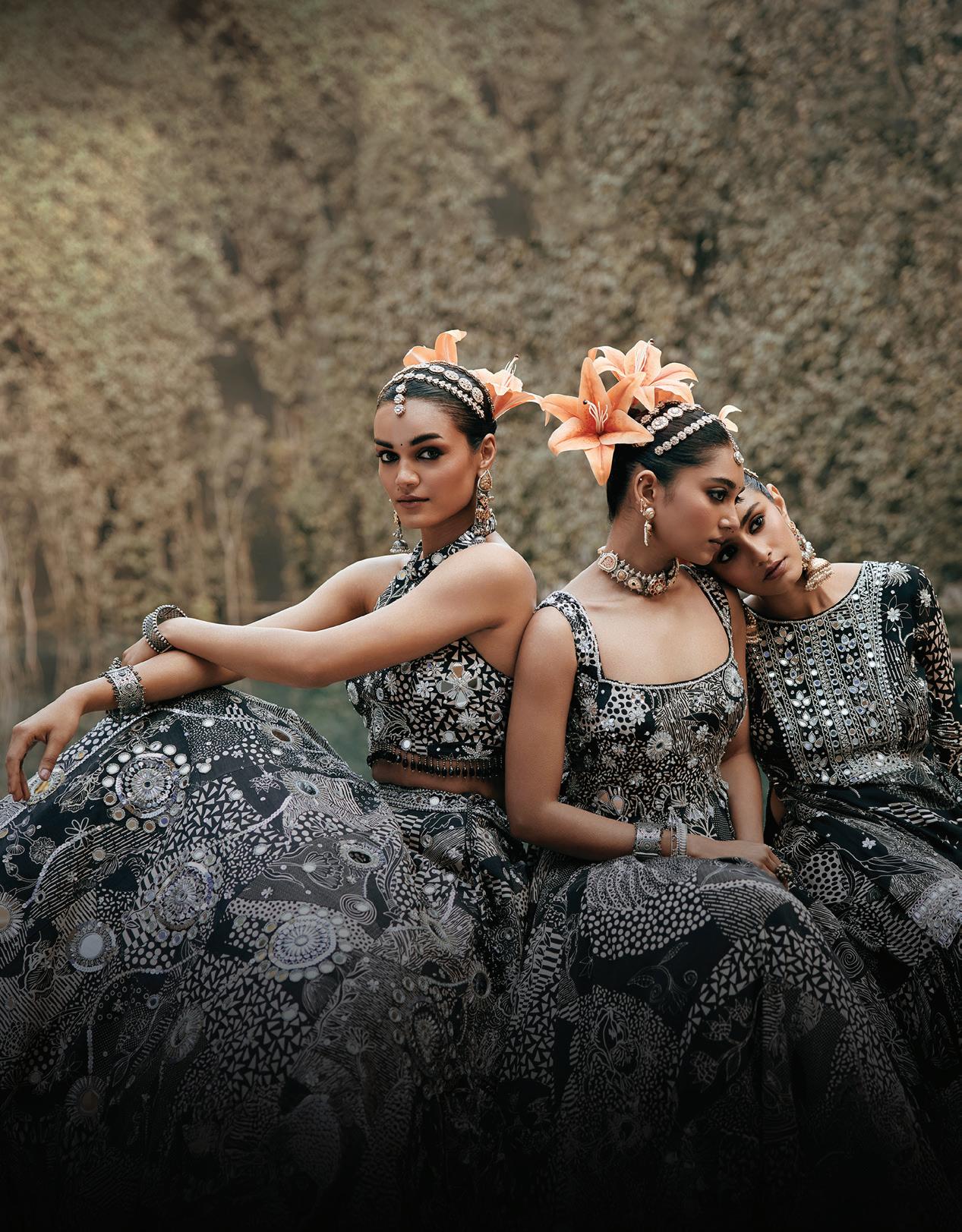
By Shweta Kulkarni

Exquisitely weaving the vibrancy of nature into silhouettes that feel as effortless as they are elegant, celebrated designer duo Diya Aroraa and Rajvvir Aroraa once again enthrall us with their latest offering—Hawa Hawaii. Launched under their label DiyaRajvvir, the edit strikes a refreshing balance between contemporary edge and traditional charm and encapsulates our playful spirit.
“Hawa Hawaii is a modern ode to nature,” shares Rajvvir Aroraa, describing the vision behind the collection. He adds, “Featuring prints with the intricate meshwork of jaal, finding harmony with the vibrancy of exotic blooms—it is bold, vibrant, and offers a fresh perspective on classic Indian artistry and handwork.”

The name, Hawa Hawaii, has a certain cinematic charm, evoking breezy glamor, playful audacity, and retro flair with a dash of theatricality. Explaining the essence behind the name Hawa Hawaii, couturier Diya Aroraa quips, “The name Hawa Hawaii represents the flowy silhouettes in the collection. The delicate cutouts of the blouses create a sense of drama, giving a modern twist to Indian artistry.”
Ever since the inception of the label DiyaRajvvir in 2015, the young, dynamic designer duo has never failed to make a statement with their exceptional creativity and visionary spirit that seamlessly blends contemporary Indian wear with a delicate touch of Western sensibilities. The latest collection from the house of DiyaRajvvir—Hawa Hawaii, is no different—a cheerful celebration of color, craftsmanship, and effortless elegance.

Though brimming with tropical vibrance, Hawa Hawaii exhibits a deep respect for Indian craftsmanship. “Hawa Hawaii explores the captivating intersection of craftsmanship and the vibrant allure of the tropics,” says Rajvvir. He adds, “The collection carries an explosion of the beauty of both, floral motifs and the natural world. It invites you to immerse yourself in a world of vibrant colors, exotic textures, tropical elegance, and traditional aesthetic.”
The Hawa Hawaii collection boasts an array of silhouettes, elegantly tailored to accentuate and flatter. “The silhouette range consists of blouses with delicate cutouts and sheer panels that create a sense of drama,” notes Diya, before elaborating, “Flowing fabrics and intricate embroidery mimic the rays using metallic threads and luminous beads. The collection also offers a few fresh silhouettes—like structured lehengas and ruched skirts that cater to modern women who like to experiment. The collection also introduces silhouettes that accentuate your curves, skirts, and pants that sit perfectly at your waist… basically, Hawa Hawaii has it all.”


What further adds to the collection’s magnetic appeal is a kaleidoscopic burst of color—think rich black, maroon, rust, teal, and sage green. Speaking about the diverse color palette, Rajvvir says, “The gorgeous palette represents versatility, timeless tropical elegance, and emotional resonance. Each of those colors not only complements the others but also brings its own emotional and visual weight, which can be powerful, especially when you are designing for all seasons and the full dayto-dawn cycle.”
At the heart of the collection lies an indulgent mix of fabrics—organza, crepe, and tulle—which are elevated with intricate hand embroidery, and finally all engineered together for movement and allure. “We used intricate embroidery mimicking the rays, using metallic threads and luminous beads, with gold and silver mirrorwork, which promises to be a true celebration of creativity,” says Diya. She adds, “Blending airy fabrics like organza, crepe, and tulle, with intricate detailing, the garments in this collection manage to be both statement-making and supremely wearable.”
Intricate craftsmanship has been the hallmark of the label. Further elaborating on Diya’s thought, Rajvvir adds, “We leaned heavily into traditional Indian hand embroidery methods like mirrorwork, bead and sequin work. This collection features playful tassels and delicate scallop borders made with hand embroidery techniques.”
Hawa Hawaii is not just an aesthetic indulgence; it’s deeply functional and tailored for the real-life rhythms of the modern woman. Diya says, “Hawa Hawaii features easy-to-style silhouettes that can transition through the day with minimal effort. The collection boasts effortless lehenga sets, breezy kaftans, tailored jacket sets, and relaxed-fit skirt sarees that offer both form and function.”
She adds, “The USP of Hawa Hawaii is that it has a wide range of products. Silhouettes that are easy to carry in all festivities, from day to night. The versatile design represents retroinspired silhouettes where elegance meets modernity.”

Because of such fresh and creative perspectives, DiyaRajvvir’s designs have always been a favorite among Bollywood's most stylish stars as well. Actors like Tamannaah Bhatia, Banita Sandhu, Nora Fatehi, Varun Dhawan, Shahid Kapoor, Gauahar Khan, Kriti Sanon, and others have often been spotted in their creations, adding further credence to the brand’s star appeal.
The journey of Diya and Rajvvir is both rooted and aspirational. Rajvvir, an MBA graduate from Cardiff with a background in textiles, and Diya, a design talent honed through stints at Shehla Khan, Harper’s Bazaar, and Vogue, launched their label in Mumbai with a small but passionate team. Today, they run a bustling atelier in Delhi NCR,
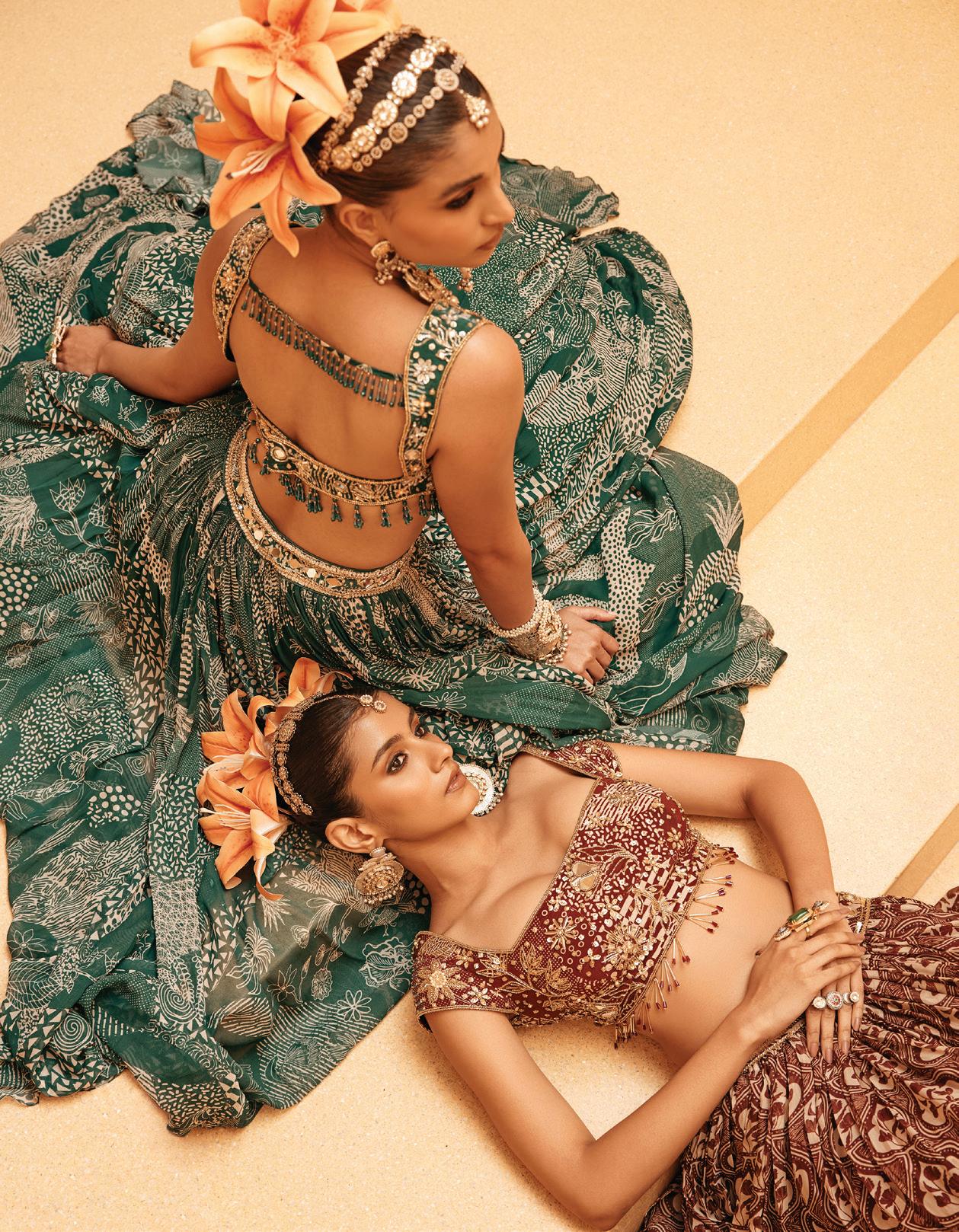
supported by over 100 artisans and team members. “What began as a passion project has become a family,” the duo reflects warmly. “Our clients, karigars, and team—they are all part of the DiyaRajvvir story.”
With Hawa Hawaii, they take another step forward toward their commitment to celebrating creativity, comfort, Indian artistry, and individuality. “The journey has just begun,” they say, “We are excited to grow bigger and better—in quality, design, and reach.”
And if Hawa Hawaii is any indication, DiyaRajvvir is well on its way.
With a price range of Rs.30,000 to Rs.1,25,000, the Hawa Hawaii collection offers luxurious yet wearable festive dressing. Hawa Hawaii is available online via the brand’s official website www.diyarajvvir.in, and at India’s top multi-designer outlets such as Pernia’s Pop-Up Shop and Aza, as well as globally across the US, UK, and Canada.

By Shweta Kulkarni

Release date: May 1, 2025
Directed by: Raj Kumar Gupta
Starring: Ajay Devgn, Riteish Deshmukh, Vaani Kapoor, Supriya Pathak, Saurabh Shukla
The no-nonsense and sharp-witted IRS officer Amay Patnaik (Devgn) is back in action for his 75th raid. And this time around, he is going head-to-head with political heavyweight Dadabhai, played with sinister swagger by Riteish Deshmukh, and the audience simply can’t keep calm. From the looks of the trailer, this face-off is going to be nothing short of explosive. Adding to the intrigue, the makers have revealed in a statement that the film is inspired by real-life income tax cases, “Raid 2 will celebrate the unsung heroes of the Income Tax Department and narrate a true case from their books.” So, mark your calendars and double-check your tax filing—Amay Patnaik is coming, and this ‘Raid’ means serious business.
Barring a couple of good films, the past few months in Bollywood can be summed up as more ‘meh’ than ‘masala’. However, looking at the upcoming slate of movies, it looks like the industry is finally getting its groove back. With a line-up boasting action, romance, and comedy, one thing cinephiles can be pretty much sure about is—entertainment galore. Here's a look at some of the most-awaited films, which we think will reignite the silver screen and set the cash registers ringing.

Release date: May 9, 2025
Directed by: Aarti S. Bagdi
Starring: Fawad Khan, Vaani Kapoor, Ridhi Dogra, Lisa Haydon
Good old-fashioned love stories have become a rare find in Bollywood lately, hence Abir Gulaal is a welcome change. Set in London, the film promises a soulful narrative and heartwarming romance, which has been missing from the mainstream lately. As the film's producers said, “Fawad has a massive global fan base, and we anticipate that audience and his fans will wholeheartedly embrace this film, as it showcases him in his most endearing role yet.” Well, the makers are indeed bringing back love, and we are ready to lose our hearts again.

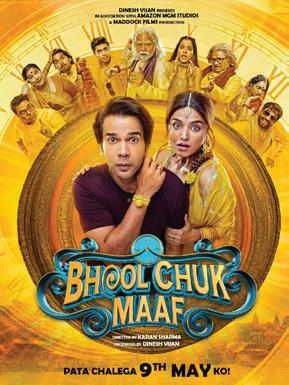


Release date: May 9, 2025
Directed by: Karan Sharma
Starring: Rajkummar Rao, Wamiqa Gabbi, Seema Pahwa, Sanjay Mishra
Bhool Chuk Maaf comes with all the wedding shenanigans—the band, the baaja, the songs, the relatives, but there is a tiny hitch—The saat pheres seems elusive. Think Groundhog Day meets Band Baaja Baarat only with more madness, and that sums up the essence of this film. At the heart of this film is the hopeless romantic—Ranjan (Rao), who is all set to marry his sweetheart Titli (Gabbi), but as fate would have it, he gets thrown into a bizarre time loop, just before the big day. So, while the wedding prep seems to be in full swing, the wedding itself feels increasingly out of reach. Joining Rao in this mad chaos is Wamiqa Gabbi. Speaking about the film, she said, “I always doubted if I could do comedy because comedy is very tough. I have learned comic timing from Raj and the entire cast we have. So now I am completely ready for another comedy film.” Apart from the leads, the film also boasts of other comic veterans like Seema Pahwa, Sanjay Mishra, Raghubir Yadav, Zakir Hussain, and others.
Release date: June 6, 2025
Directed by: Tarun Mansukhani
Starring: Akshay Kumar, Riteish Deshmukh, Abhishek Bachchan, Sanjay Dutt, Nana Patekar, Jacqueline Fernandez, Sonam Bajwa
Talk about a star-packed extravaganza, and no one delivers it better than the blockbuster comedy franchise—Housefull. Packed with a stellar ensemble cast and all its signature essentials, the franchise is now returning with its fifth installment, which promises to be bigger, crazier, and loaded with entertainment. While the makers are tight-lipped about the plot, reports claim that Housefull 5 takes a whodunit turn, with a mysterious murder aboard a luxury cruise ship and the entire cast landing on the suspect list. Speaking about the film, writer-producer of Housefull 5, Sajid Nadiadwala said, ‘It’s a huge film and will cross Housefull 4 on the scale front. We plan to surprise everyone with the theme.” Knowing the franchise’s track record, we can expect nothing but a joy ride loaded with laughs and punchlines.
Release date: July 4, 2025
Directed by: Anurag Basu
Starring: Aditya Roy Kapur, Sara Ali Khan, Anupam Kher, Neena Gupta, Pankaj Tripathi, Konkona Sensharma
Director Anurag Basu returns to familiar territory with Metro… In Dino, a spiritual sequel to his critically acclaimed 2007 film, Life In A… Metro. Like the previous one, Metro… In Dino is set against the backdrop of bustling urban life and is an anthology that weaves together four contemporary love stories. The makers shared a photo collage of all the actors in the film and wrote, “When love, fate, and city life collide, magic is bound to happen! Metro… In Dino brings the stories of the heart from the cities that you love!” With renowned names like Pankaj Tripathi, Konkona Sensharma, Neena Gupta, and Basu’s whimsical touch, this Metro too is sure to tug at the heartstrings.


Summer is officially here, and the best way to bask in its glory is to head outdoors. Luckily, Canada is blessed by nature’s bounty—breathtaking landscapes, diverse ecosystems, fresh air, and picture-perfect skies, which lure you to step out. It is the perfect season to don your explorer’s hat, pack your camping gear, and step out with your whole family in tow to soak up the sunshine in nature’s playground. To help you jumpstart your summer adventure, we have put together a list of some of Canada’s best national parks that are quintessential destinations for family camping trips.

By Shweta Kulkarni

Tucked away in Alberta’s Rocky Mountains, this stunning UNESCO World Heritage site with its jaw-dropping scenery and extensive wildlife is an ideal summer camping destination. Spanning over 6,641 square kilometers, Banff enchants with its pine forests, glaciers, snow-capped mountains, alpine lakes, and wildlife like grizzly bears, moose, and elks. Established in 1885, Banff National Park is Canada’s first national park with an impressive 2,400 designated camping sites. Whether you enjoy the crackling warmth of a campfire or scaling moun-
tain peaks to witness mesmerizing vistas, or relaxing under the stars, Banff offers campers many choices with modern conveniences. Most of the campsites at Banff come equipped with essential amenities, including washrooms, showers, access to clean water, and even electrical hookups for RVs. Among the most popular campgrounds here are Tunnel Mountain, Two Jack Main, Two Jack Lakeside, Johnston Canyon, Lake Louise Soft-sided and Hard-sided, Silverhorn Creek, and Rampart Creek, each offering easy access to hiking trails and scenic viewpoints.

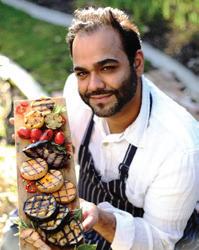






If you truly wish to enjoy the striking natural beauty of Cape Breton Highlands, go camping here. Perched on the northern tip of Nova Scotia, along the renowned Cabot Trail, this spectacular national park boasts a dramatic landscape with cliffs, mountains, valleys, cascading waterfalls, and rocky coastlines—all creating a surreal backdrop for a memorable camping adventure. Campers can choose from seven front-country campgrounds and one backcountry campground. Chéticamp Campground, Broad Cove Campground, and Ingonish Beach Campground are some of the popular campsites here. These sites offer easy access to nearby hiking trails, with postcard-worthy views of canyons, highlands, and seacoasts. As a bonus for campers planning an extended stay, the park offers a 15% discount for booking seven or more consecutive nights within the park.

This spectacular piece of nature in British Columbia offers a fascinating tapestry of sandy beaches, secluded island archipelagos, and dense emerald rainforest. Comprising three distinct regions—Long Beach, the Broken Group Islands, and the West Coast Trail—Pacific Rim National Park Reserve is perfect for families seeking both—adventure and tranquility. Green Point Campground, at Long Beach, is a popular location offering decent camping facilities in a tranquil setting. Adventure seekers can head to the Broken Group Islands, which are accessible only by boat and offer remote backcountry camping across seven designated sites. For hikers, the famous 75-kilometer West Coast Trail, with multiple trekking options, is the perfect go-to spot. So, whether you enjoy hiking through forests, kayaking, or sleeping to the sound of waves, Pacific Rim National Park promises a camping experience like no other.
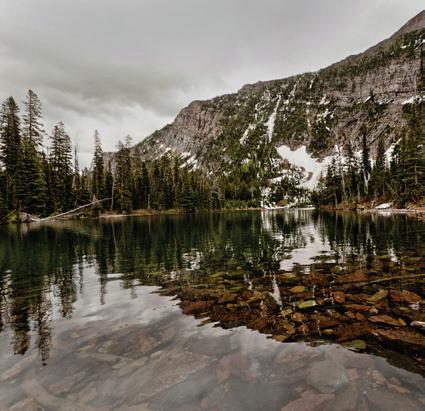
Nestled in the southwest corner of Alberta, Waterton Lakes National Park, with its mind-blowing scenery and easy-going wildlife, is another hot favorite amongst campers. Pristine clear lakes, roaring waterfalls, sparkling streams, colorful rocks, and stunning mountain vistas cast an unforgettable spell here. The centrally located Townsite Campground offers 238 sites, all equipped with essential amenities like showers and kitchen shelters. If you crave a more rustic experience, visit Belly River Campground, which provides modest, unserviced sites ideal for wildlife viewing and peaceful nights under the stars. Furthermore, there are nine designated backcountry campgrounds accessible only on foot, which are ideal for spending quiet time in nature.






Kouchibouguac National Park is another postcard-perfect camping destination in Canada that attracts travelers from across the globe, and for good reason. With a captivating landscape of serene estuaries, mixed-wood forests, pristine beaches, lagoons, and salt marshes, Kouchibouguac’s beauty is sure to leave you speechless. Located on the east coast of New Brunswick, Kouchibouguac National Park features several camping options. The primary camping area—South Kouchibouguac Campground, with 311 sites, is popular among families as it provides all essential amenities like washrooms, showers, picnic tables, fire pits, and playgrounds. Then there is the Côte-à-Fabien Campground, which offers 31 unserviced sites. It is perfect for campers looking to spend some peaceful time in a picturesque setting. Additionally, the park also offers three different backcountry camping locations, each equipped with fireplaces, picnic tables, and pit toilets.









DARPAN Magazine proudly joined over 550,000 attendees at Surrey’s Nagar Kirtan, celebrating Khalsa Day with the community. From vibrant floats to volunteer-run food stalls, the team experienced the spirit of unity and Sikh heritage firsthand, engaging with locals and capturing the event’s significance for the vibrant Sikh community of British Columbia.

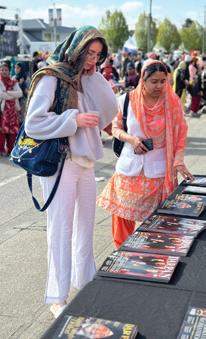
The DARPAN Magazine team was present at Vancouver’s historic Vaisakhi Nagar Kirtan, soaking in the joyous celebrations and community spirit. Amid hymns, Gatka and cultural performances, the event showcased Sikh values of service and equality. DARPAN connected with attendees and volunteers, highlighting the enduring cultural importance of this cherished tradition since 1979.
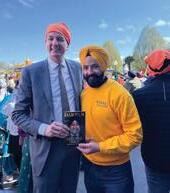


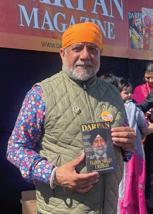

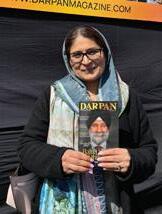


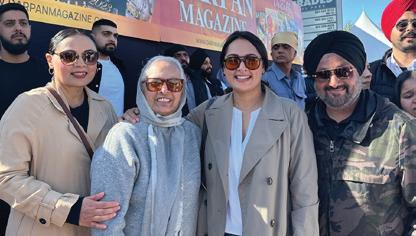


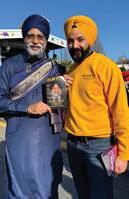


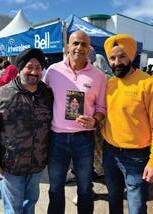

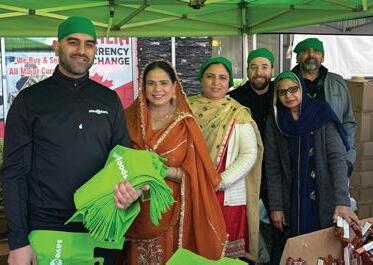
TiE Vancouver’s AGM 2025 brought together entrepreneurs, leaders, and visionaries for an inspiring evening of connection and collaboration. Held on April 24, 2025, at Fraser View Banquet Hall, the event celebrated innovation and shaped future goals for Vancouver’s entrepreneurial community, and was graced by Chairperson Praveen Varshney, President Vik Khanna, VP Pankaj Bagga, and others.


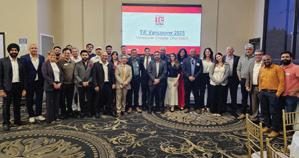









Q: How did you two meet, and what was your first impression of each other?
We met in Canada through mutual friends in our local community. Our first conversation was so natural—it felt like we had known each other for years. I found him kind, respectful, and sincere. He says he was drawn to my calm nature and the way I carried myself.
Q: Can you share the story of your proposal/engagement?
It was a quiet, heartfelt moment. We had been discussing marriage seriously. One day, I was with my sisters, going to Crescent Beach, and there he was, standing with roses and a ring. He asked me to marry him in the most genuine and thoughtful way, and I absolutely loved it.
Q: Describe your wedding day for us. Did you have a favorite part of the wedding?
Our wedding day was emotional and joyful. We had a fusion of traditions from both sides and it felt like a celebration of love and unity. My favorite part was seeing both families together, celebrating as one.
Q: Tell us more about your reception.
The reception was vibrant, with traditional music, heartfelt speeches, and lots of dancing. We tried to make it a reflection of our journey—multicultural, warm, and full of love. Everyone felt included and celebrated.
Q: How did you choose your wedding attire? Were there any special considerations or sentimental elements?
I wore a traditional bridal lehenga in shades of red and gold, and he wore a sherwani in black with black shimmery embroidery. We wanted our outfits to reflect modesty, elegance, and our shared heritage.
Q: Were any traditions or



customs particularly important to include in your wedding?
Yes, we followed Islamic traditions throughout. The Nikah ceremony was the most important aspect, and we made sure to include dua, recitations, and proper guidance from an Imam.
Q: Where did you honeymoon?
We enjoyed a cozy honeymoon within Canada—a peaceful beach vacation in Tofino. It was quiet, relaxing, and gave us the chance to reflect and enjoy each other’s company. We’re planning a longer trip later, possibly to Italy or Turkey.
Q: Looking back, is there anything you would have done differently?
Stress less and enjoy every moment – big and small. I was so focused on making each event perfect that I couldn’t enjoy them to the fullest. That is the only thing I’d do differently.
Q: What do you love the most about one another?
I love his compassion and how grounded he is—he brings so much stability to my life. He says he loves my resilience and the way I love with my whole heart.



Q: How does it feel to be married, and what are you most looking forward to in this new chapter?
It feels like we’ve started a new journey— not just as partners, but as best friends building a life together. We’re most excited about starting a family and travelling the world together.
Q: If you could give one piece of advice to couples planning their wedding, what would it be?
Don’t lose yourselves in the planning— stay focused on the meaning behind it all.

BY BENJAMIN YONG
The Vancouver International Auto Show returned this spring with its best-attended show yet, packing almost 139,000 attendees into the Vancouver Convention Centre over three days in late March. Among the more than 200 vehicles on display were a handful debuting in Western Canada for the first time. Here are DARPAN’s top three picks from this year’s event.




Lincoln’s flagship is reimagined for the 2025 model year as a fifth-generation offering. The flagship SUV shares a similar front-end aesthetic with crossover siblings—the Aviator and Nautilus—boasting a bold front grille and squared-off nose, here adding a full-width headlamp-to-headlamp LED light bar. The sloped roofline and satin aluminum detailing give a sporty look, and up to 24-inch high-gloss Ebony or Luster Nickel wheels are available. A Jet Appearance Package bundles black accents, 22-inch high-gloss Ebony black alloys, and special badging.
The brand likens the interior to a “spa on wheels”—cue the Lincoln Rejuvenate feature that reclines the driver’s seat and moves the steering wheel upwards, begins a heating and massage program, and bathes the space in soothing fragrance, ambient lighting, and relaxing sounds. Even the second-row passengers get to enjoy massaging captain’s chairs that are heated, ventilated, and power adjustable. There’s seating for up to eight, and all trims are all-wheel drive, utilizing a 3.5-litre V6 engine producing 440 horsepower and 510 lb-ft of torque.




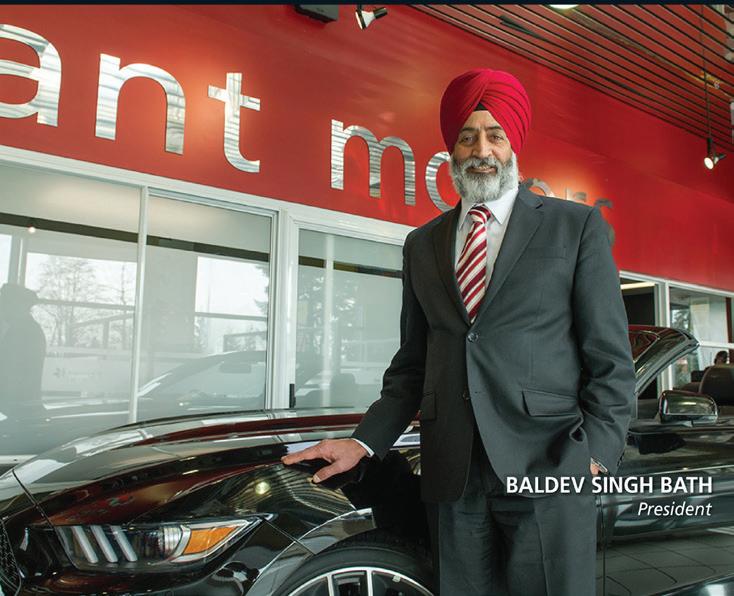

The latest and greatest Chevy Corvette is the automaker’s most powerful yet: the ZR1, equipped with a 5.5-litre twin-turbocharged V8 dubbed the LT7, makes a mind-boggling 1,064 horsepower and 828 lb-ft of torque and is good for a quarter-mile time of under 10 seconds. And the sleek exterior design isn’t just for looks. The aerodynamic body, spoiler, carbon-fiber front splitter, and other bits help generate over 1,200 pounds of downforce to keep the tires glued to the tarmac at high speeds.
Not seen since the Corvettes from the 1960s, the ZR1 reintroduces a split rear window. Between the panes of glass is a vented carbon fibre “spine” helping remove heat radiating out of the mid-engine compartment. Inside, exclusive ZR1 badging can be found on an interior plaque, door sill plates, and steering wheel, as well as a spicy Habanero orange-coloured upholstery. The sports car is currently being manufactured at the GM Bowling Green Assembly Plant in Kentucky.











BY BENJAMIN YONG

MSRP: $85,300 (AS TESTED)
Motor: Dual Electric
Horsepower: 396
Torque (lb-ft): 443
Gearbox: Single-speed Automatic
Layout: Dual Motor, All-wheel drive
Fuel Economy: 21.8 kWh/100 km
Mixed city/Highway (observed)

The fifth product in BMW’s electrified sub-brand, the BMW i4, gets an update after originally being introduced for the 2022 model year. The refresh brings subtle but meaningful exterior design changes and an elevated cabin. When the oversized kidney grille first debuted, to say it was polarizing is an understatement—just look at the slew of internet memes that still exist today. Now finished in matte chrome, the top half is fully enclosed while the bottom blends better with the central intake in the bumper, providing a more understated appearance.
DARPAN’s xDrive40 press loaner—sprayed in a stunning sage-like Cape York Green Metallic (+ $900) paint— came equipped with the optional M Sport Package (+ $2,500) bundling larger side intakes, gloss black rear lower diffuser, 19-inch jet black five-split-spoke alloy wheels, larger blue brake calipers and an exclusive flat-bottomed leather-wrapped steering wheel.
Inside the LED headlamps are new arrow-shaped signature daytime running light elements. When the vehicle detects the key fob approaching, a welcome animation plays.
A Premium Enhanced Package (+ $9,250) adds a number of upgrades to the interior, including an upholstered dashboard, Harmon Kardon stereo, BMW Drive Recorder dashcam, and Digital Cockpit Professional, comprised of a head-up display and augmented reality live video stream with overlaid contextual navigation information.
Perforated Sensatec synthetic leather seating, offered in four colors, is standard (Vernasca Leather is also available), and is complemented nicely by the fresh Ash Grey Blue Open-Pored Wood Trim option (+ $250). Leveling things up even further are the Glass Controls (+ 400), swapping out the regular gear selector, BMW iDrive Controller, and Start/ Stop button for crystallized versions.
Infotainment is still provided via a curved glass display, and users can now control climate and steering wheel/seat heating settings on screen to reduce the number of physical buttons and switches. Thankfully the physical volume knob hasn’t been removed, and the implementation of a music tuning knob as well would be welcome for easier selection of songs and stations.
In addition, a QuickSelect feature mimics the OS on smartphones and allows easy access to functions straight from the home screen rather than navigating through multiple submenus, for example, one-touch launch for Apple CarPlay or Android Auto apps. Both permit wireless connection, though I experienced the former refusing to connect to my iPhone on a couple of occasions, requiring a reboot of the system.
Dual motors continue to power the xDrive40, sending a combined output of 396 horsepower and 443 lb-ft to both axles. The Adaptive M Suspension can tailor the stiffness according to preference and environment, and even in normal Comfort mode provides that classic BMW sharp handling enthusiasts know and love. Though not a lightweight car at all, weighing around 5,000 pounds, it feels tossable in the corners and is considerably more fun to drive than even some of the Mercedes-Benz EQ sedans.
A high-capacity 84.3-kilowatt-hour lithium-ion battery pack yields a maximum 450 kilometres of travel range on a single charge, which should be plenty for most, though be mindful that this figure is impacted by cold weather and operation.
The 2025 BMW i4 xDrive starts at $69,900 and is available now.











BY BENJAMIN YONG

MSRP: $95,500 (BASE)
Motor: 3.5-liter Twin-turbocharged V6
Horsepower: 375 @ 5,800 rpm
Torque (lb-ft): 391 @ 1,300 rpm
Gearbox: Eight-speed Automatic
Layout: Front-engine, all-wheel drive
Fuel Economy: 17.7 L/100 km mixed city/highway (observed)

Genesis ups the ante with its flagship SUV, giving the GV80 some styling changes and a big update to the interior.
“The 2025 GV80 brings a new level of elevated cabin experience to the Genesis SUV lineup, making all occupants feel like honored guests,” says Eric Marshall, director of Genesis Motors Canada, in a media release. “Its new 27inch widescreen display and array of new interior colors, materials, and finishes introduce an even greater sense of elegance to GV80.”
The grille now features a polished frame going all the way around, and the corners of the crest shape have also been softened together, giving off a more premium vibe. The signature Two-Line LED headlights retain a similar silhouette as before but house Micro Lens Array technology, comprised of several small
lenses, borrowed from the G90 sedan, creating a distinct look.
Designers swapped out the formerly understated front bumper for a sportier unit that is reminiscent of the Mercedes-Benz GLE Class. Large center and side mesh-covered air intakes sit above a shiny decorative skid plate. Around the other end, a couple strips of mesh and V-shaped chrome trip are added to the lower portion, concealing the dual muffler tips, which tie everything together. A pair of fresh 20 and 22-inch wheel options is offered as well.
Interiors are where the brand has always possessed a wow factor, and this continues in the latest model. The long, combined instrument cluster and infotainment display first seen in the Hyundai Ioniq lineup of vehicles is implemented in the GV80, here as a gorgeous 27-inch example. The touch-based climate control
panel below works well enough, and it’s nice that a few physical knobs still remain.
When I drove the SUV shortly after the initial release a few months back, I was surprised at the lack of wireless Apple CarPlay and Android Auto capability. However, an over-the-air (or dealer) update later became available. The quilted Nappa leather seating surfaces are top notch, and our press loaner had unique light-colored wood trim resembling a vintage signboard. The cabin fits up to seven passengers—albeit a bit tight for adults in the third row—and lots of cargo space. About 1,000 liters with the rear bench folded down.
As before, there are two packaged powertrains: a 2.5-liter turbocharged four-cylinder engine on the Advanced and Advanced Tech grades, and the silkysmooth 3.5-liter twin-turbocharged V6 engine on the Prestige, making a healthy 375 horsepower and 391 lb-ft of torque, mated to an eight-speed automatic transmission. The mid-size crossover is quiet on the road, and the multi-link suspension keeps the ride composed and even dare-I-say sporty in the corners.
Buyers in the market for a slightly sleeker form factor and a bit of extra go can check out the GV80 Coupe, launched just last year. The variant boasts a steeply sloping rear roof, window spoiler, liftgate ducktail lip, quad exhaust outlets, and an optional 3.5-liter twin-turbocharged V6 with a 48-volt electric supercharger. In addition, an electric version based on the next-generation eM platform that will also underpin the upcoming all-new zero-emissions GV90 is rumored to debut next year.











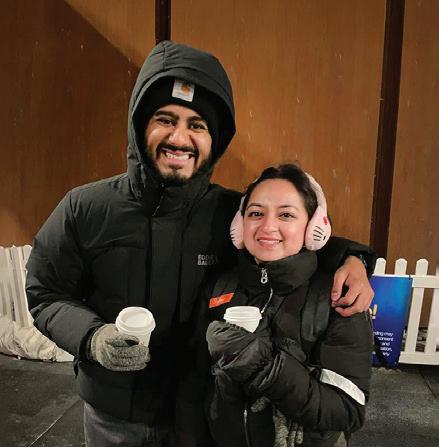
What inspired you to make the move to Canada, and how has your journey been so far?
I wanted to study Digital Marketing abroad, while also keeping doors open to potentially settling down. After researching many options and speaking with friends and family, Canada stood out as the best fit. It felt like the land of opportunities I had been searching for—a place where I could grow both personally and professionally. Looking back, I can confidently say it was the right decision
Where did you first stay when you arrived in Canada?
I was fortunate to have a friend here who helped me avoid the need to book a hotel or Airbnb.
How would you describe your experience finding a job in Canada?
Finding a job was not that challenging back in 2022, and I was lucky enough to get a couple of interviews within a week of landing here and found a job at Toronto Eaton Centre selling apparel.
Pranav Malik, a Geek Squad tech and freelance digital marketer, immigrated to Canada in 2022. He lives in North York, Ontario with his partner Divya Sridhar.
What were some of the biggest surprises or challenges you faced when you arrived?
Finding trustworthy roommates and a stable place to live. Then, some tough emotional moments. I remember the day I lost my pet back home—I couldn’t be there. It’s in moments like that when you realize how far away you really are from your family, and how difficult that can be.
How has your experience as an immigrant shaped your view of Canada as a country?
My experience so far has been nothing short of amazing. I've met some incredible people who’ve become family and found the love of my life here. I often think that if I hadn’t made the decision to leave home, I might never have experienced any of this. That choice changed my life, and it’s why I’ve grown to truly love this country and see my future here.
If you could go back in time, would you do anything differently about your immigration journey?
I wouldn’t change a thing about my immigration journey. I was mentally prepared
long before arriving for the kind of work I’d need to do to support myself initially. Thanks to my friends who were already here, I had realistic expectations, and that made a big difference.
How do you see the future for yourself and your family in Canada? What are your hopes and aspirations?
I see myself building a long-term future here— applying for citizenship, growing my career and marrying my partner. We dream of having our first pet (maybe even a second!) and settling down in a place we can truly call home. I also hope to bring my parents here to visit and spend time with us. It’s important to me that they see the life I’ve built here and feel a part of it.
Not relying on my parents for any financial support. I’ve managed to fund my entire education, cover my living expenses, and even learn to cook amazing meals all on my own. The growth I’ve experienced has felt nothing short of magical.
Thoroughly research before making the move. Talk to people who are already living here, join local Facebook groups, and gather as much information as you can. Also, basic cooking and home management skills can go a long way.


